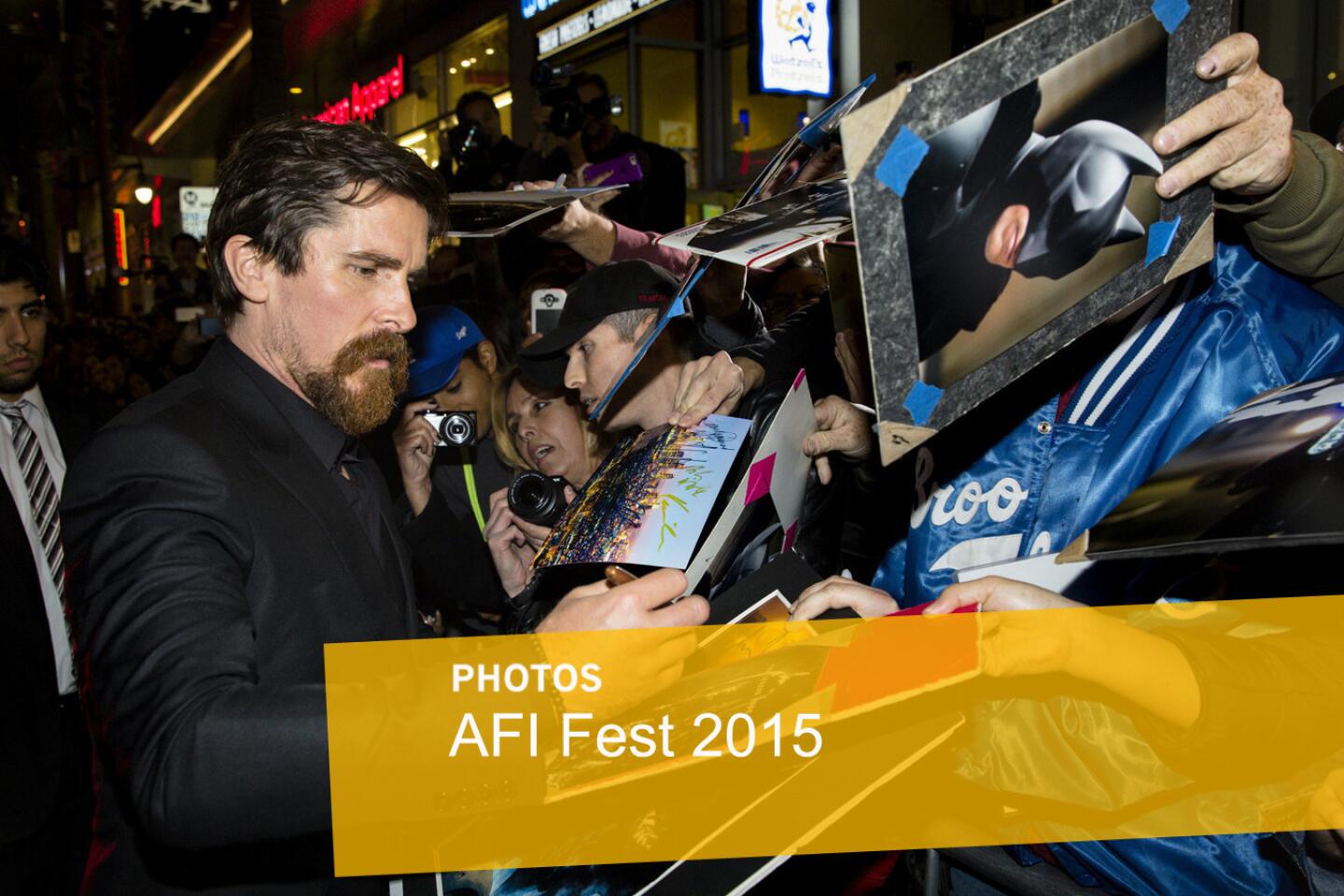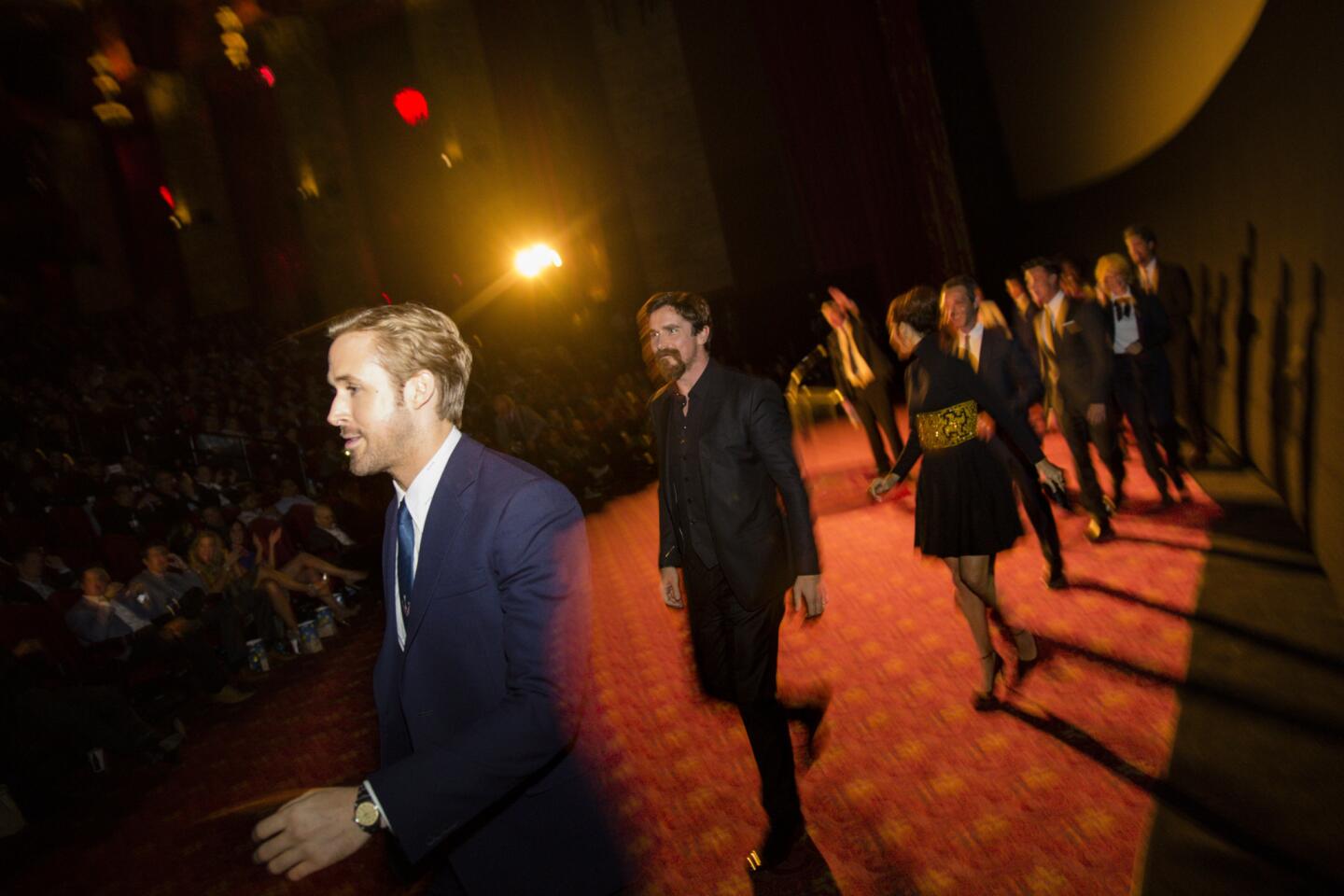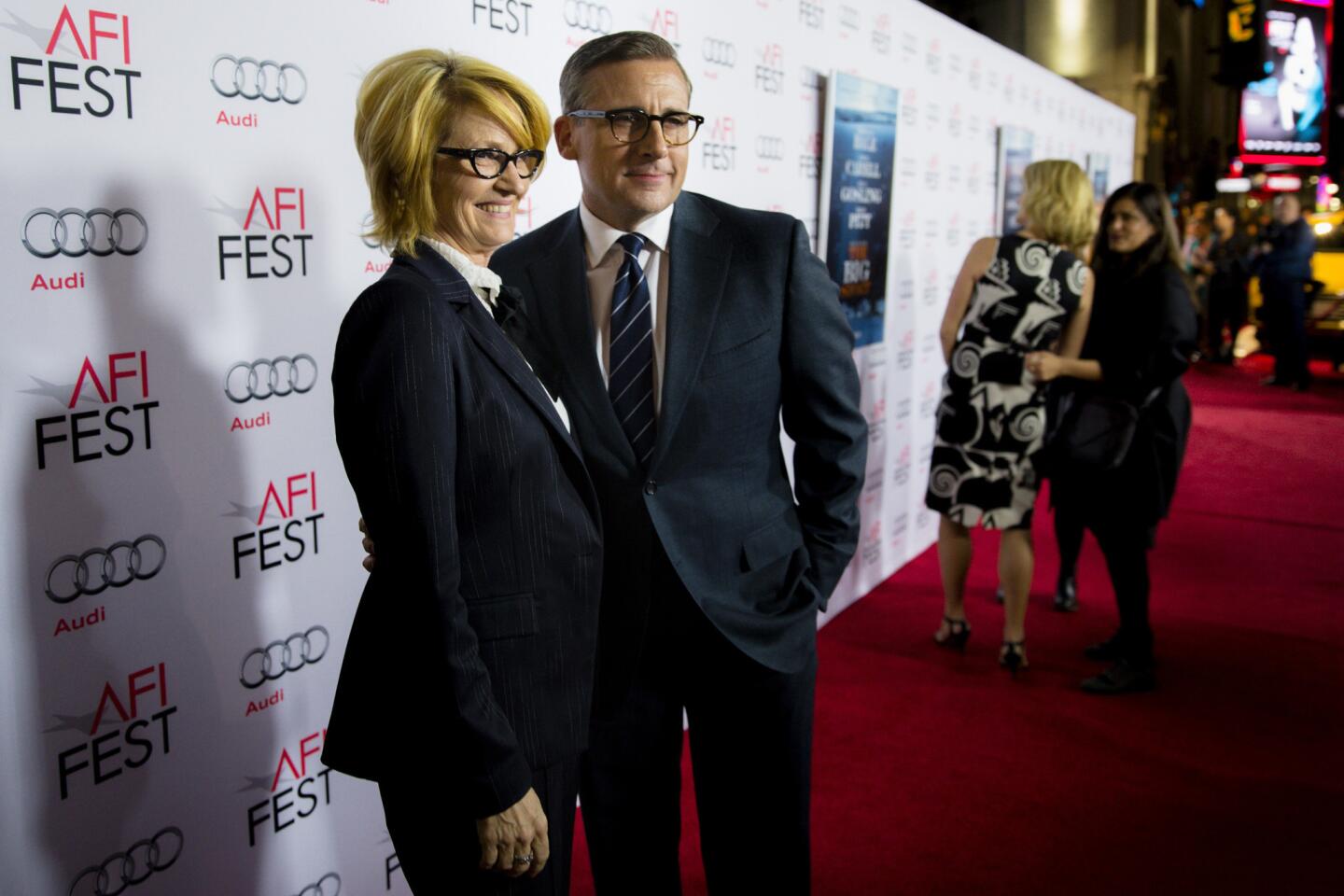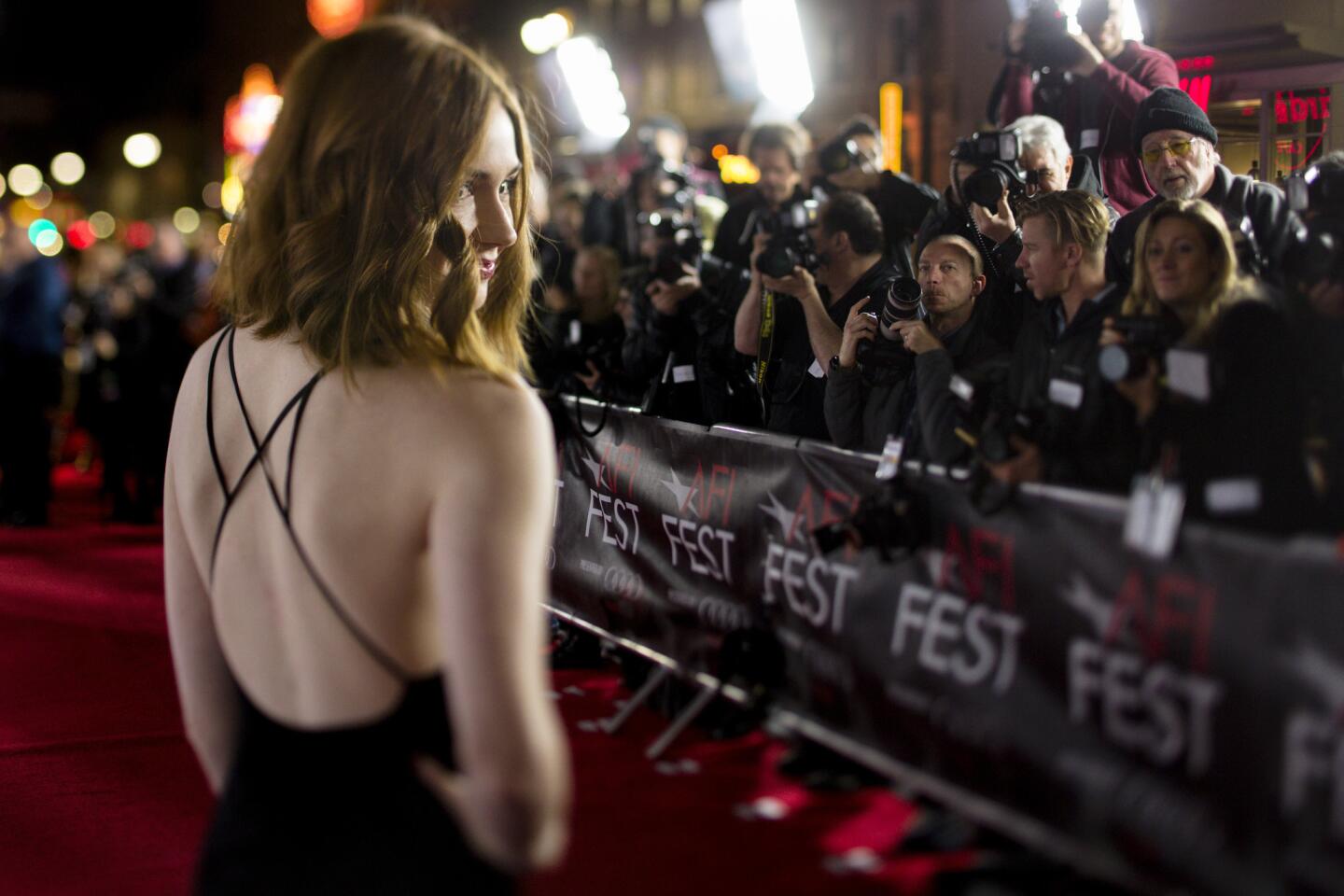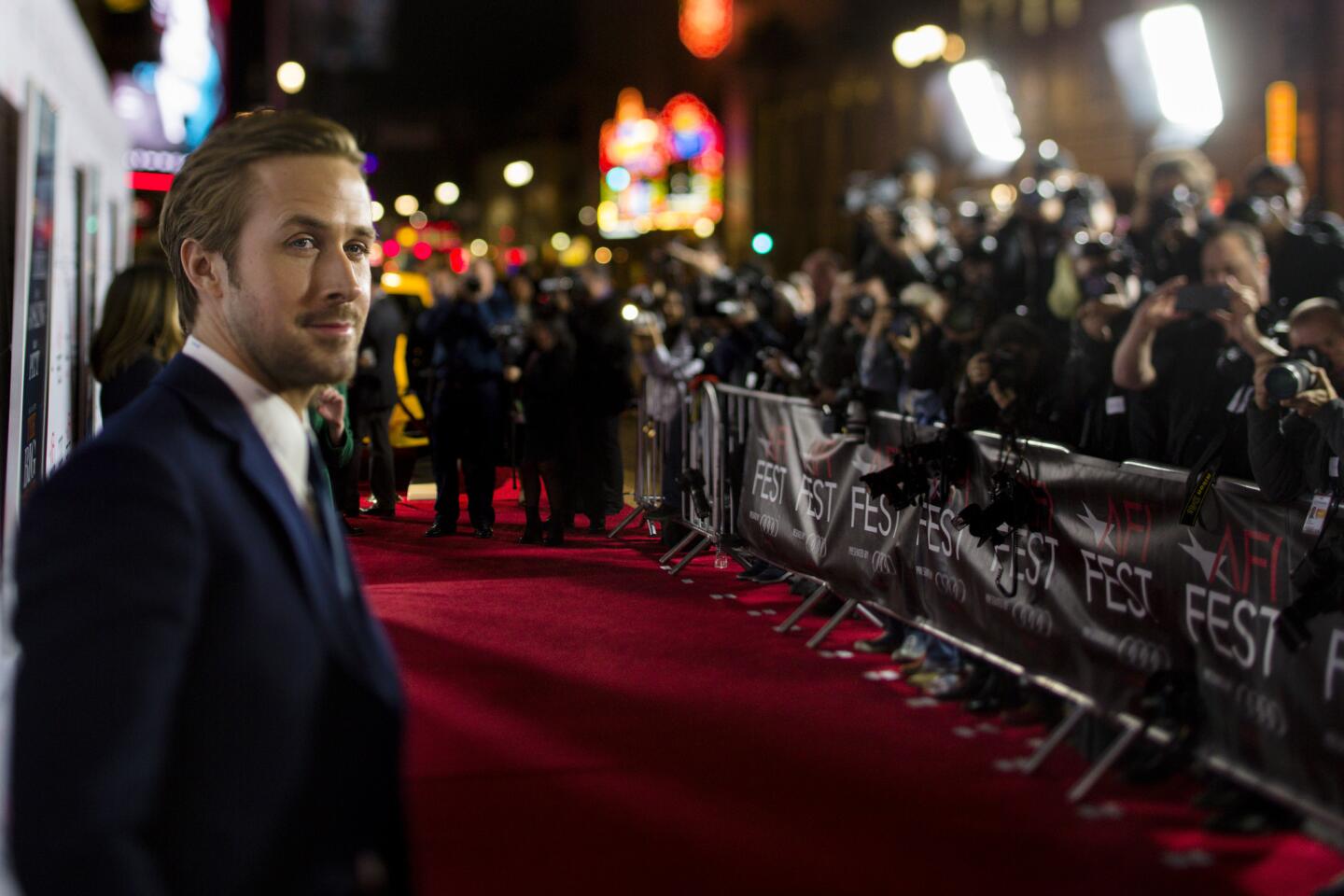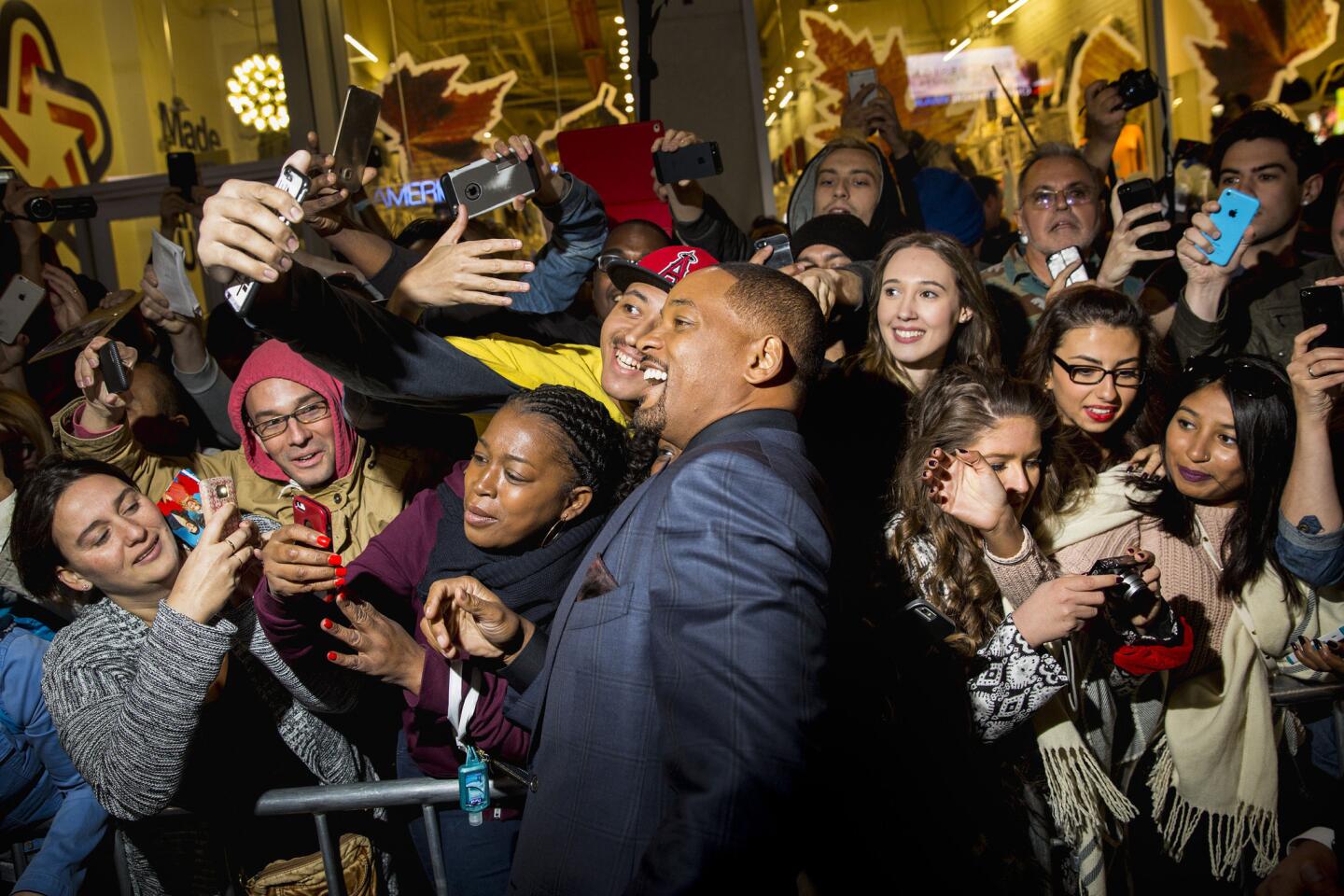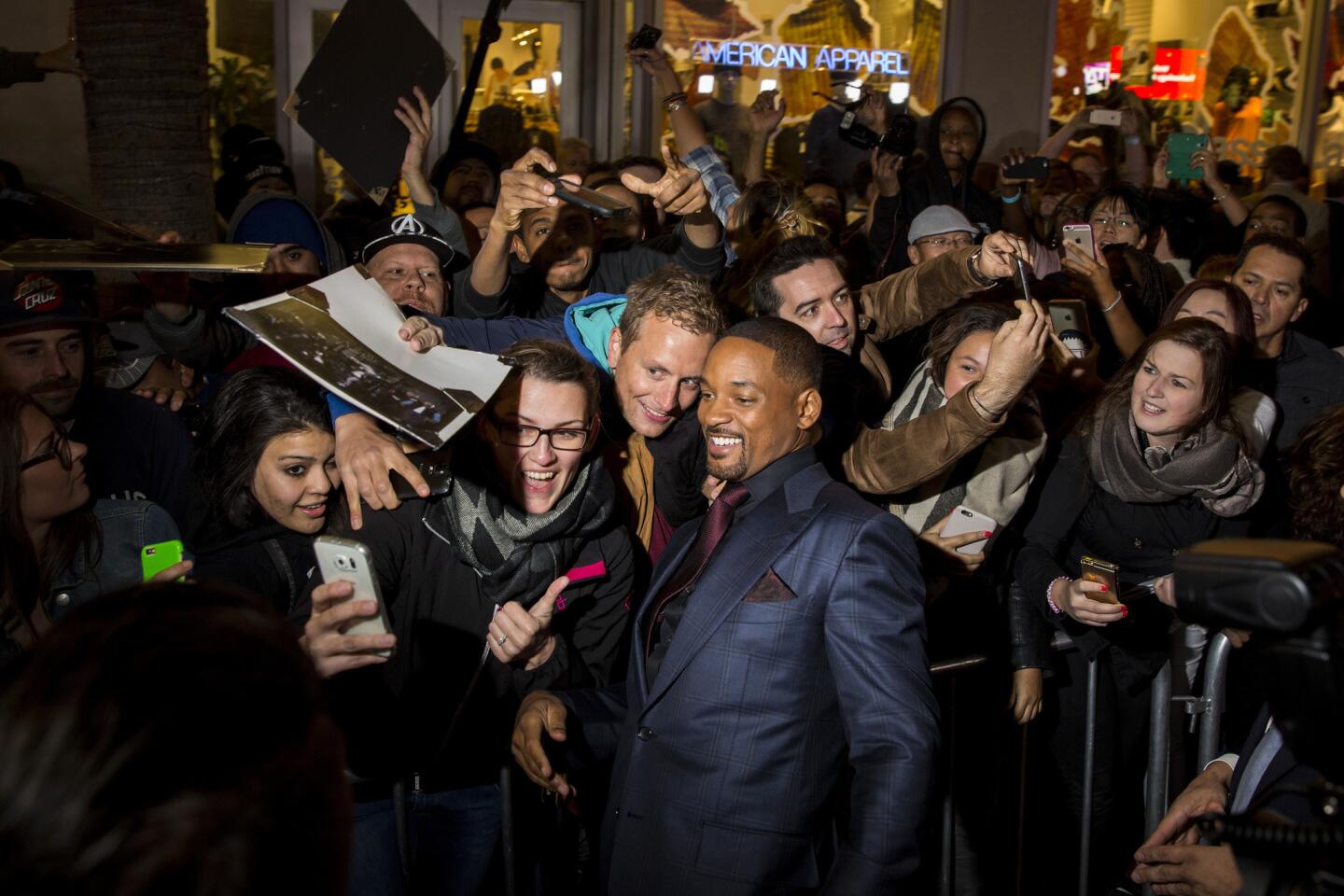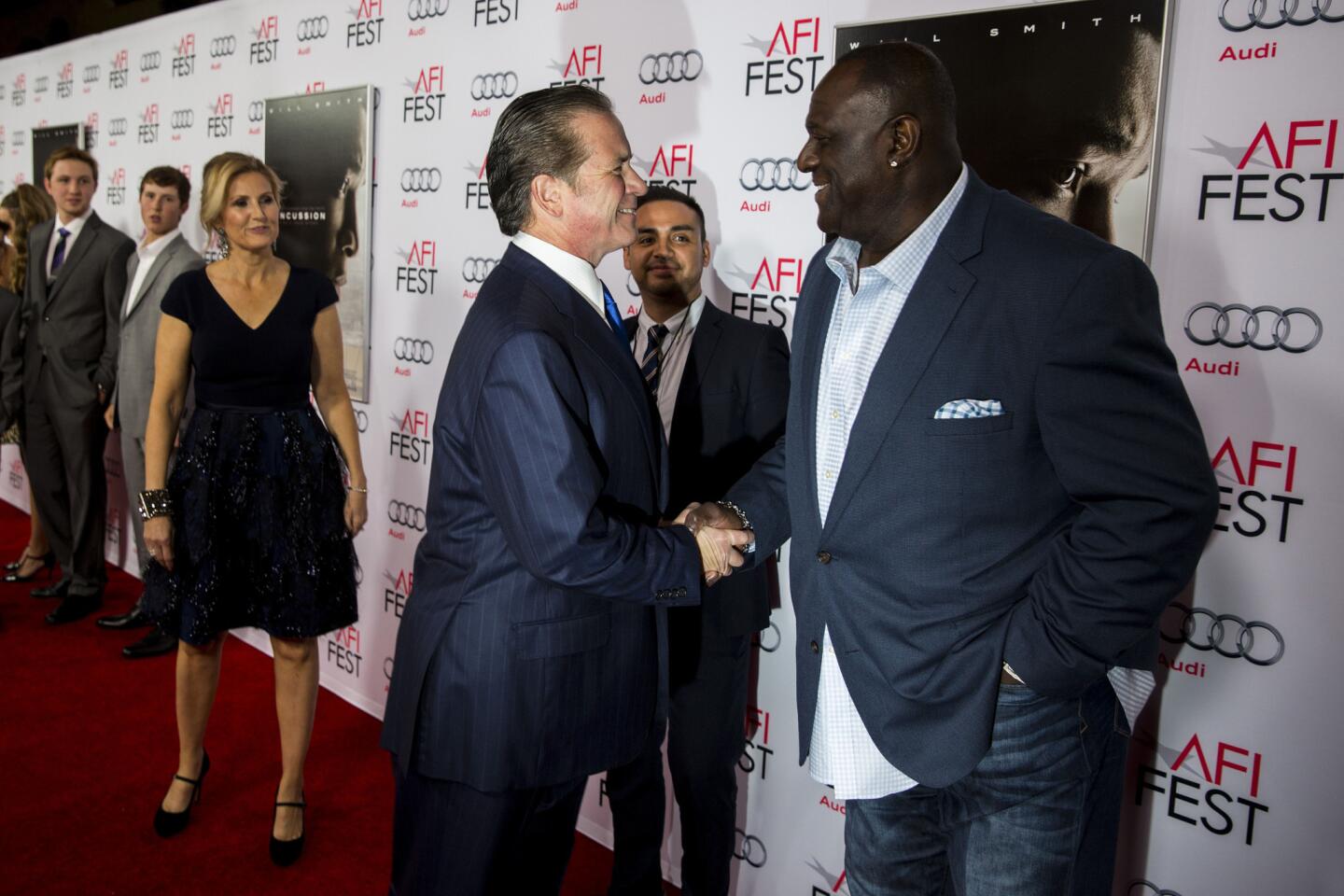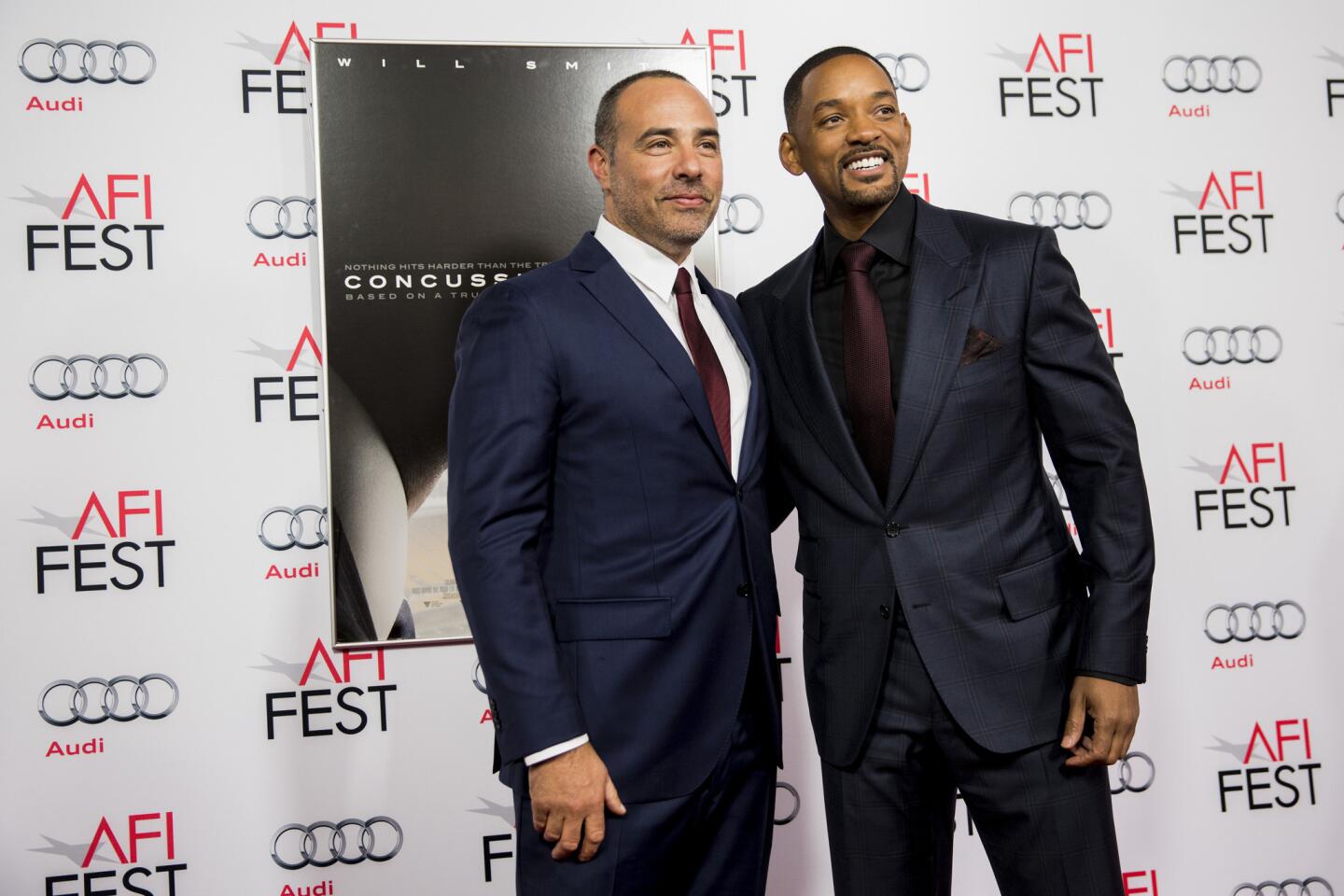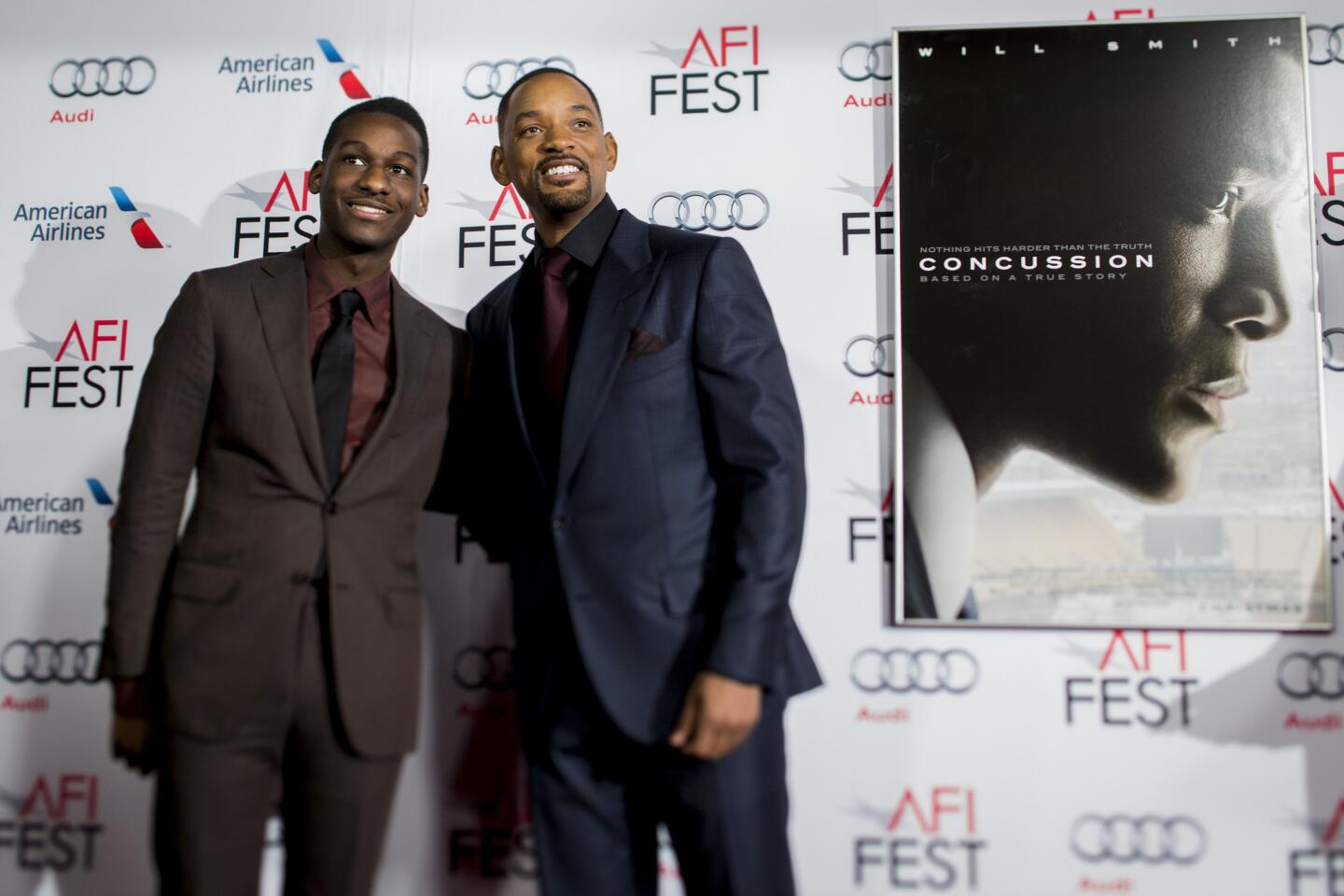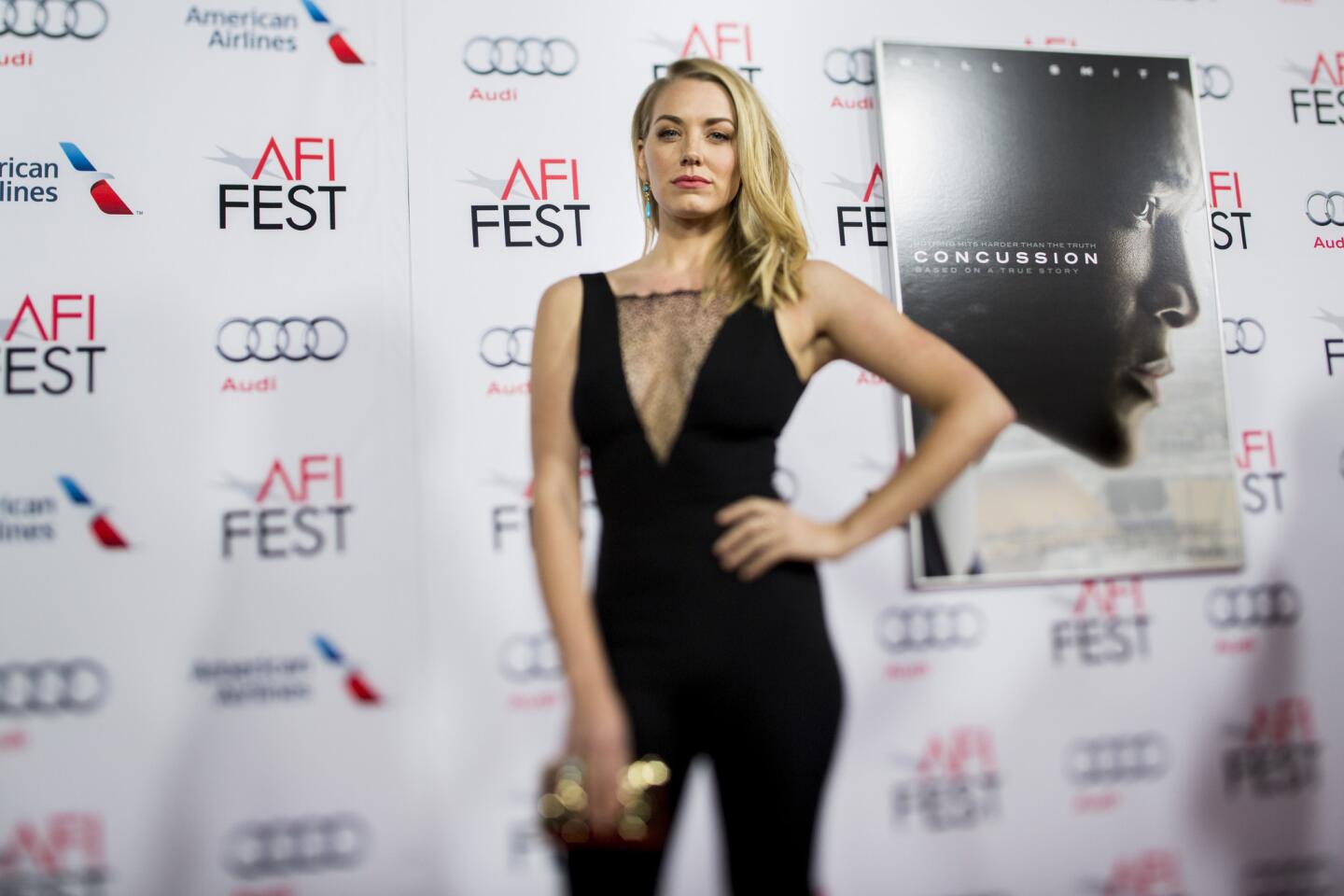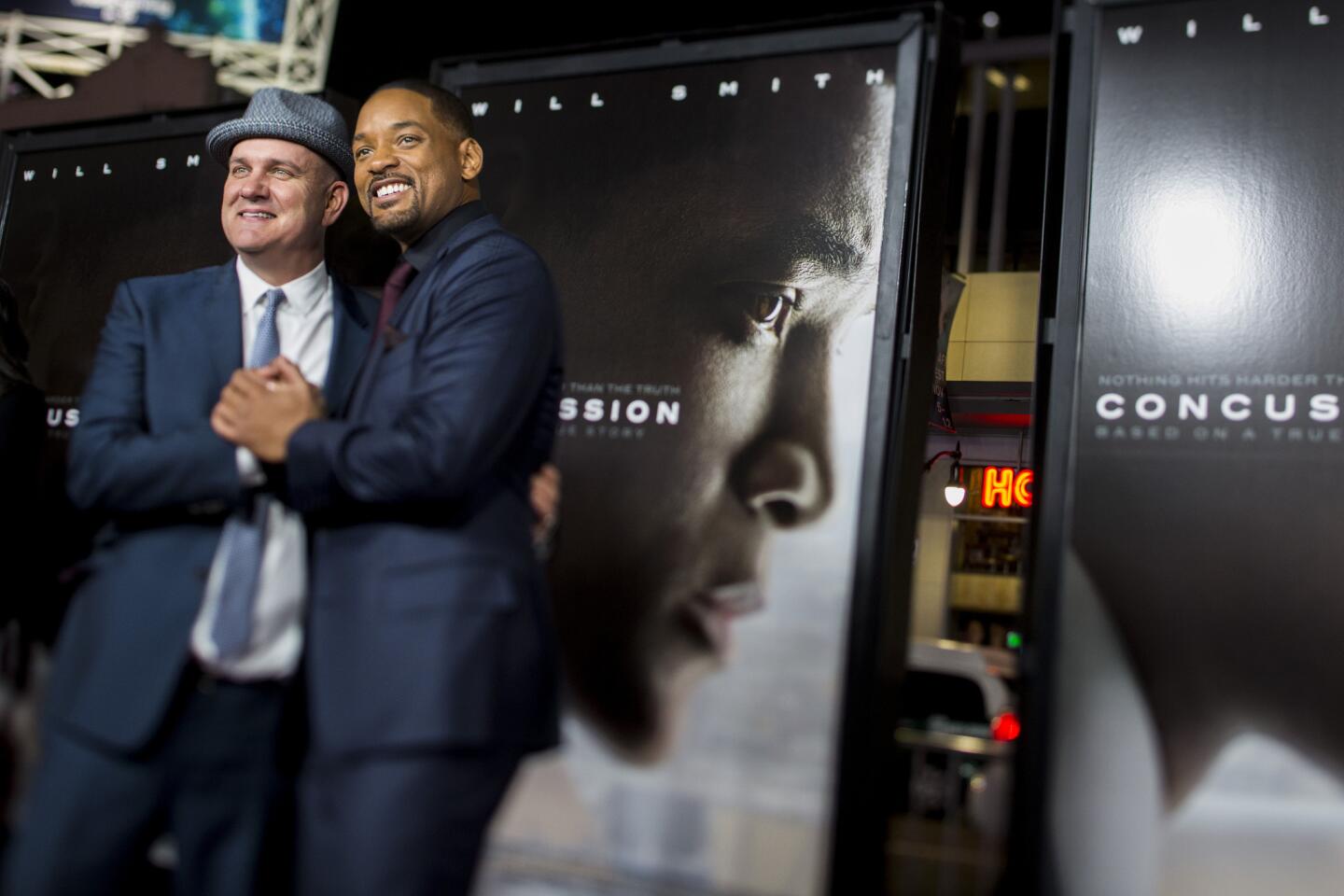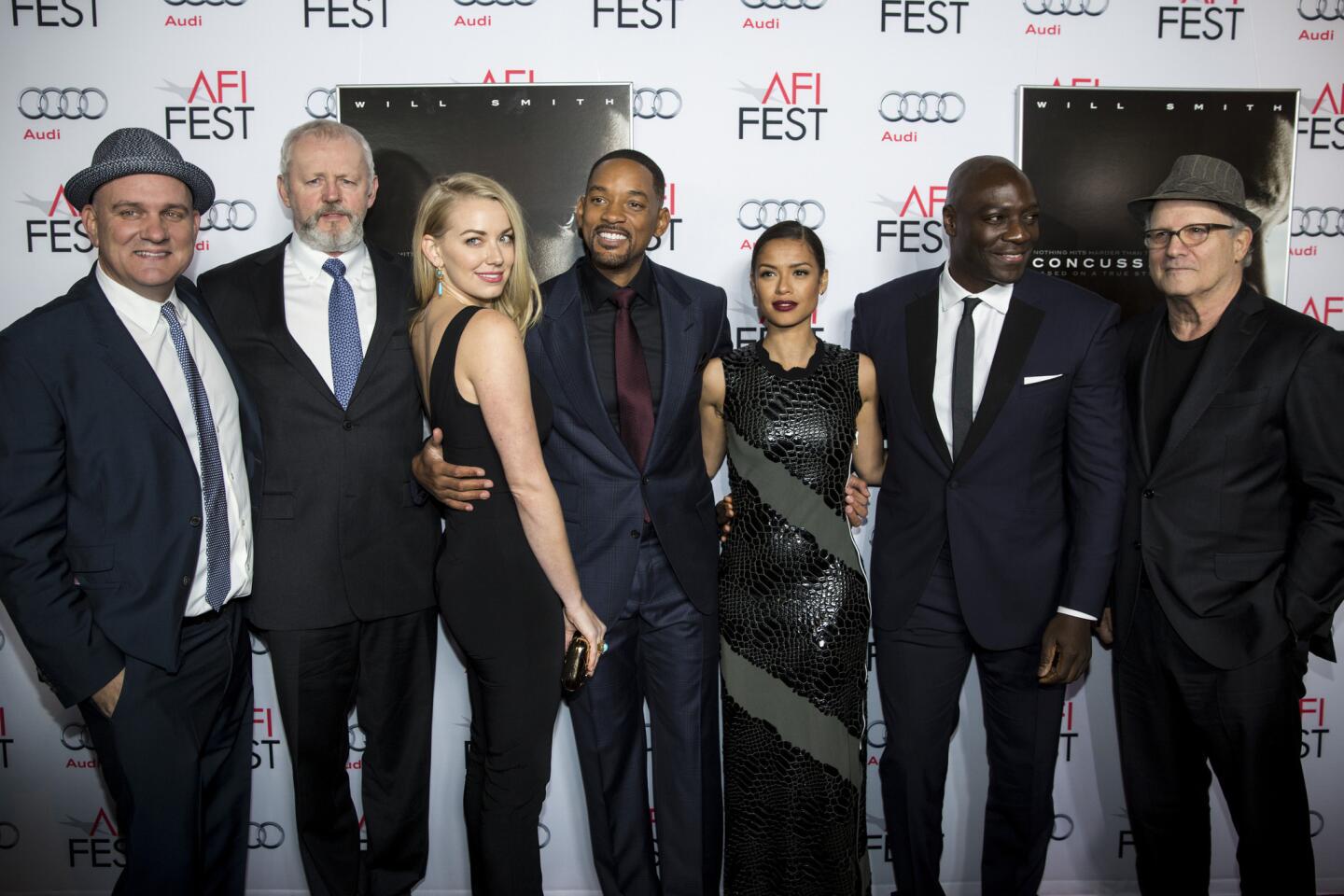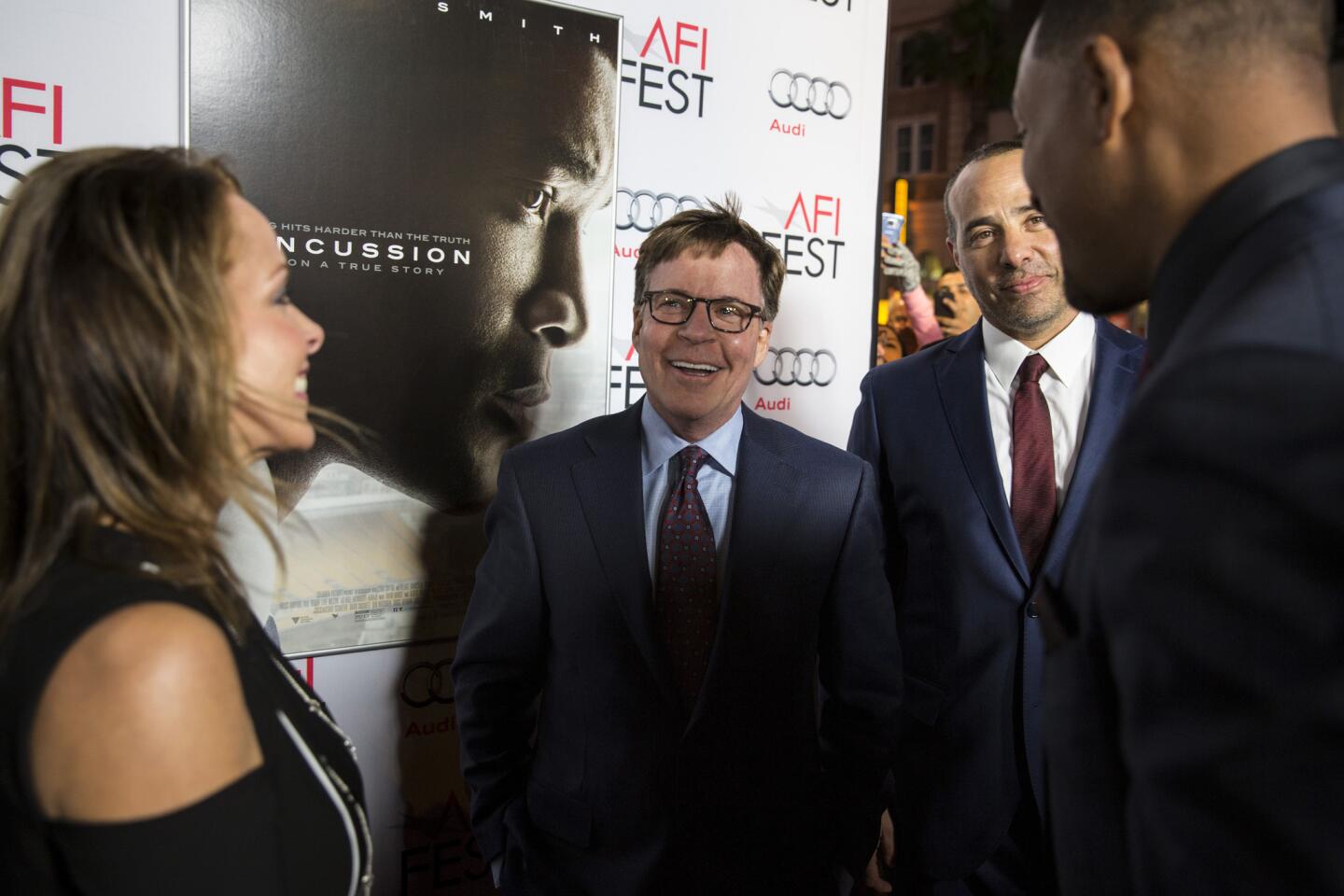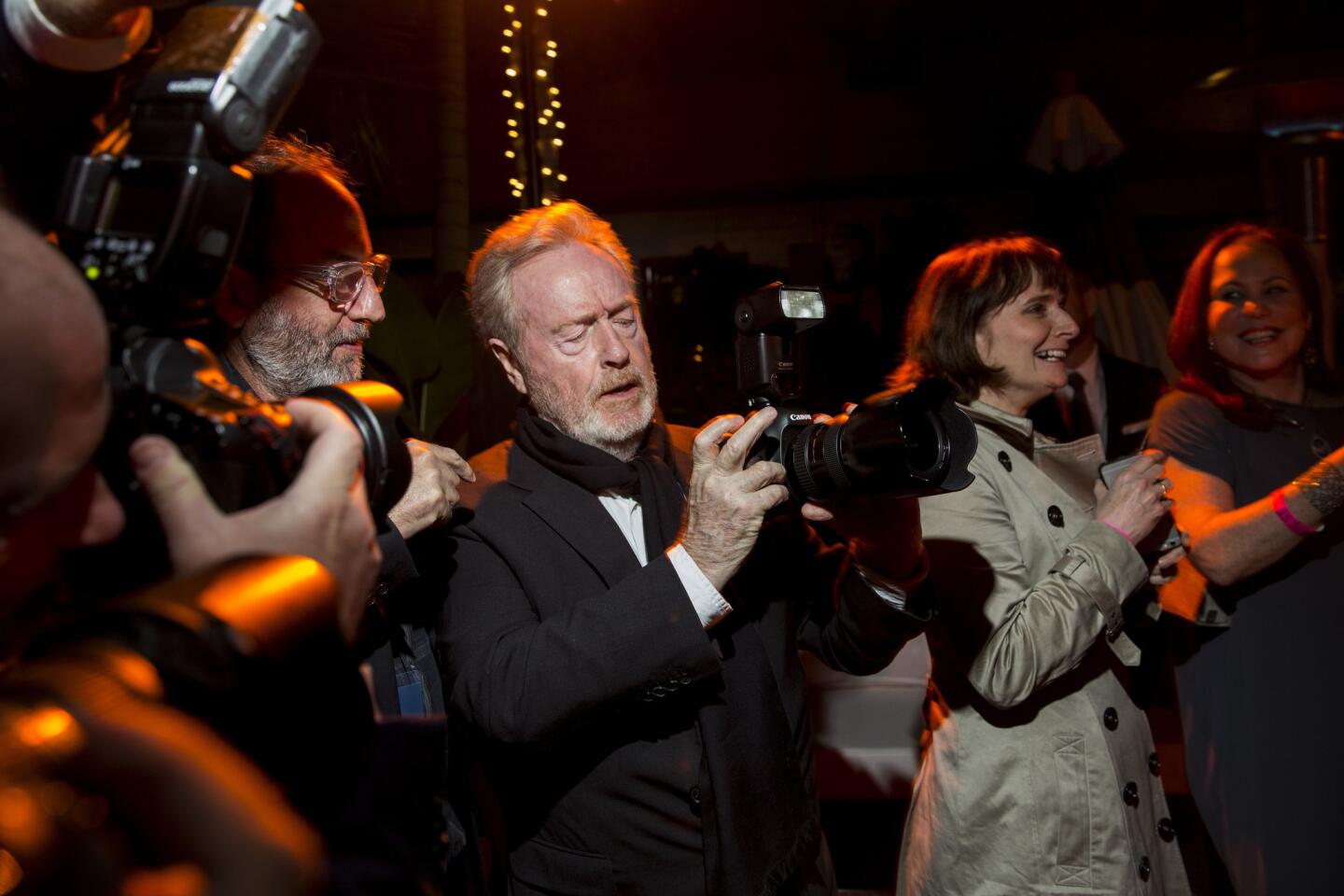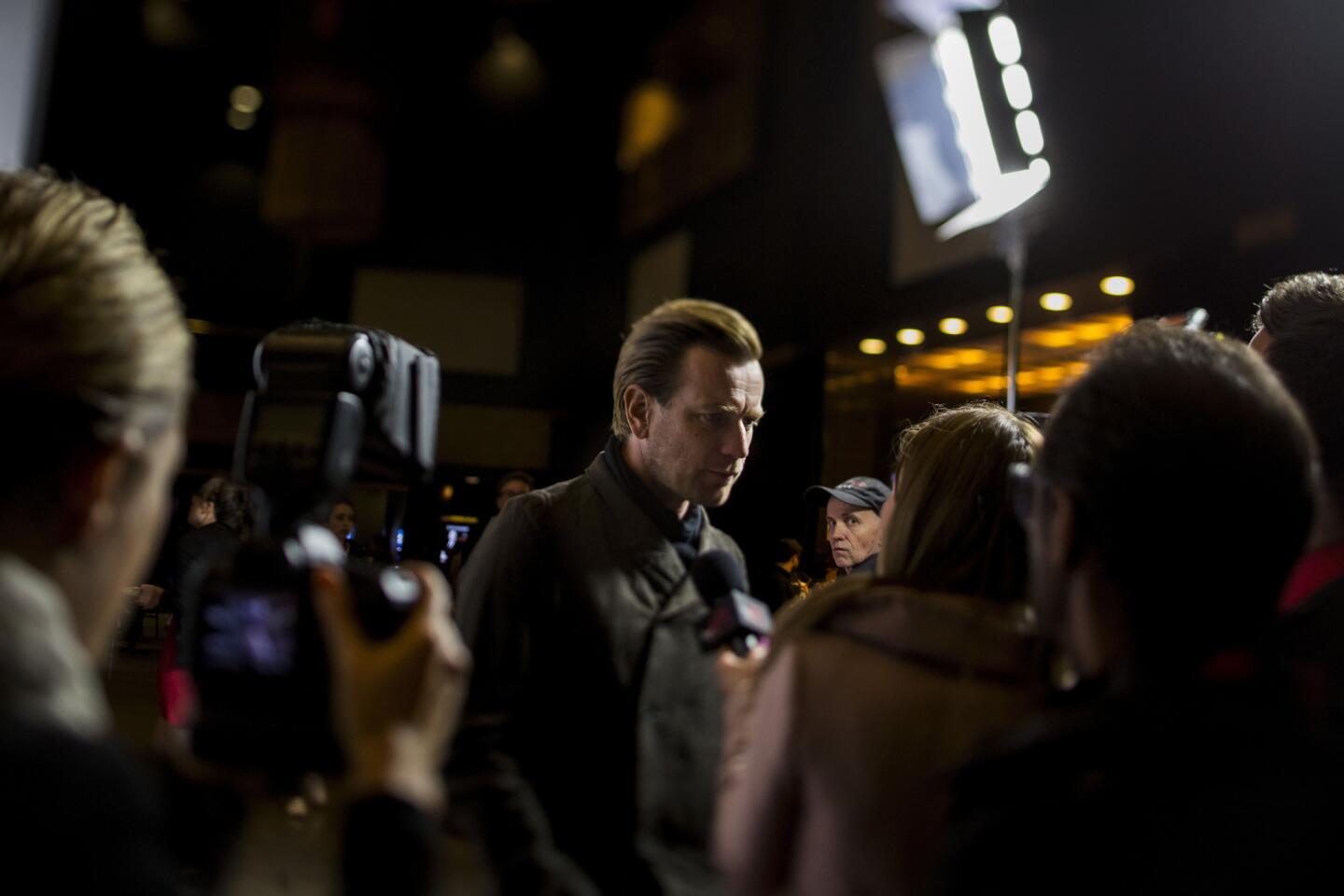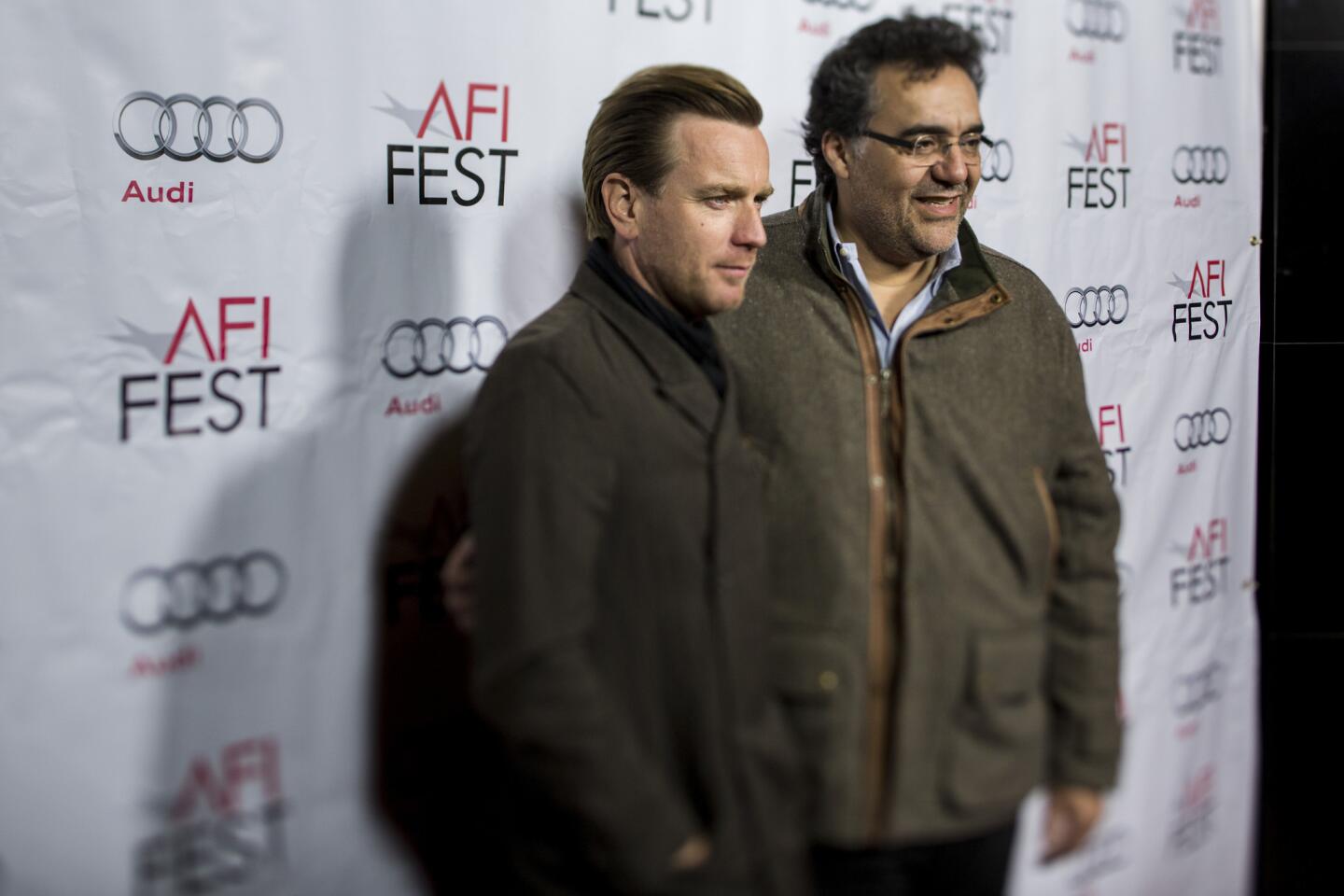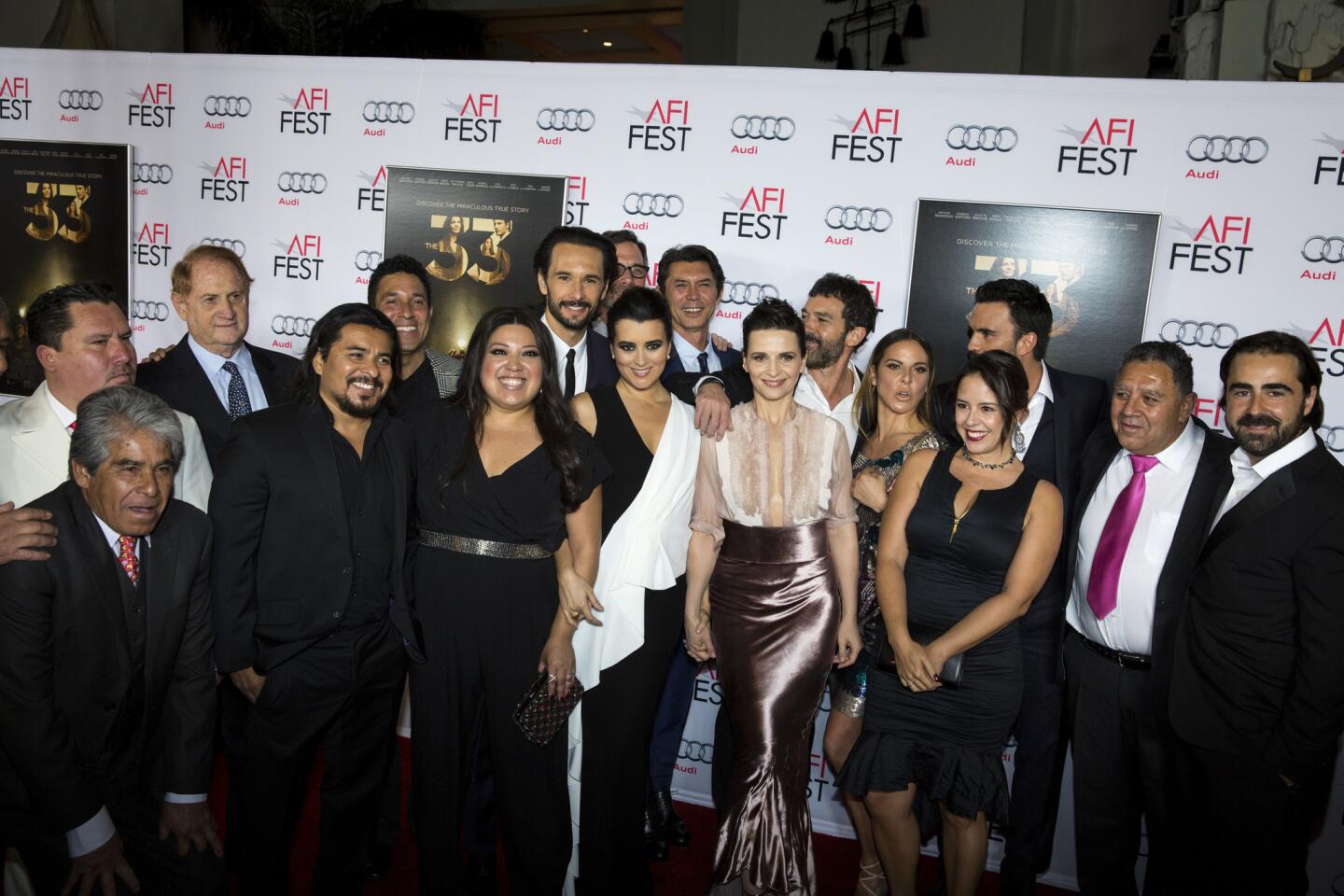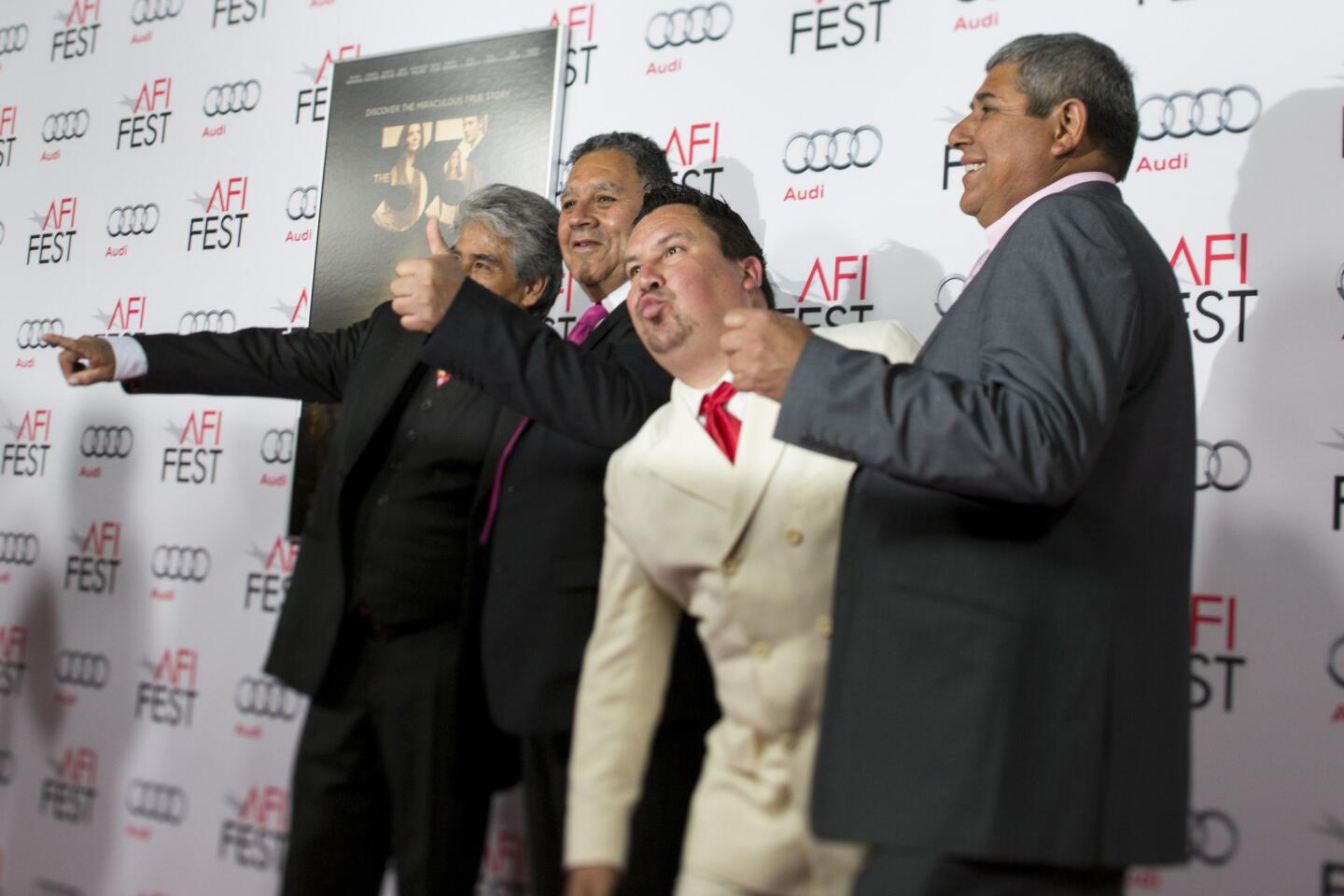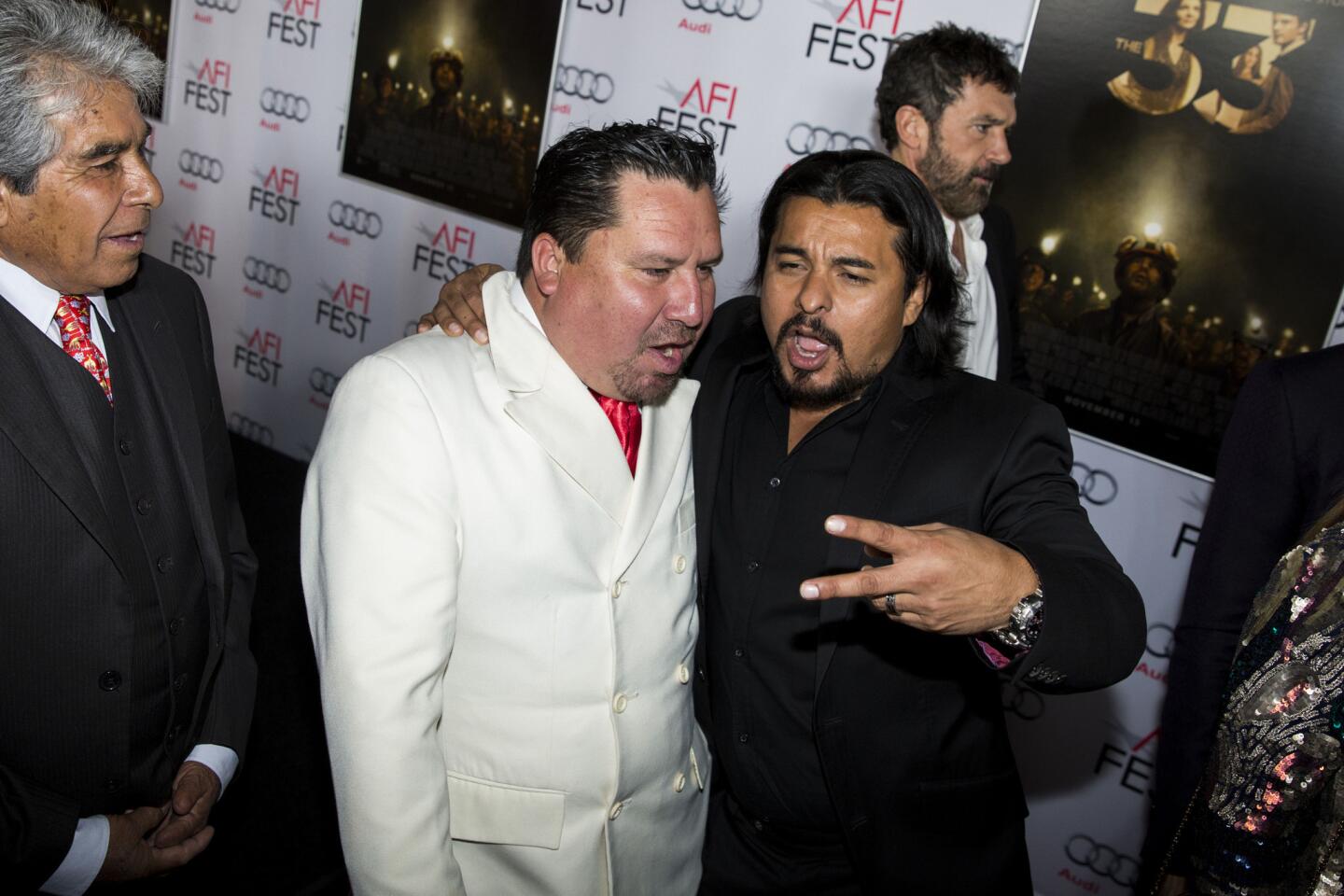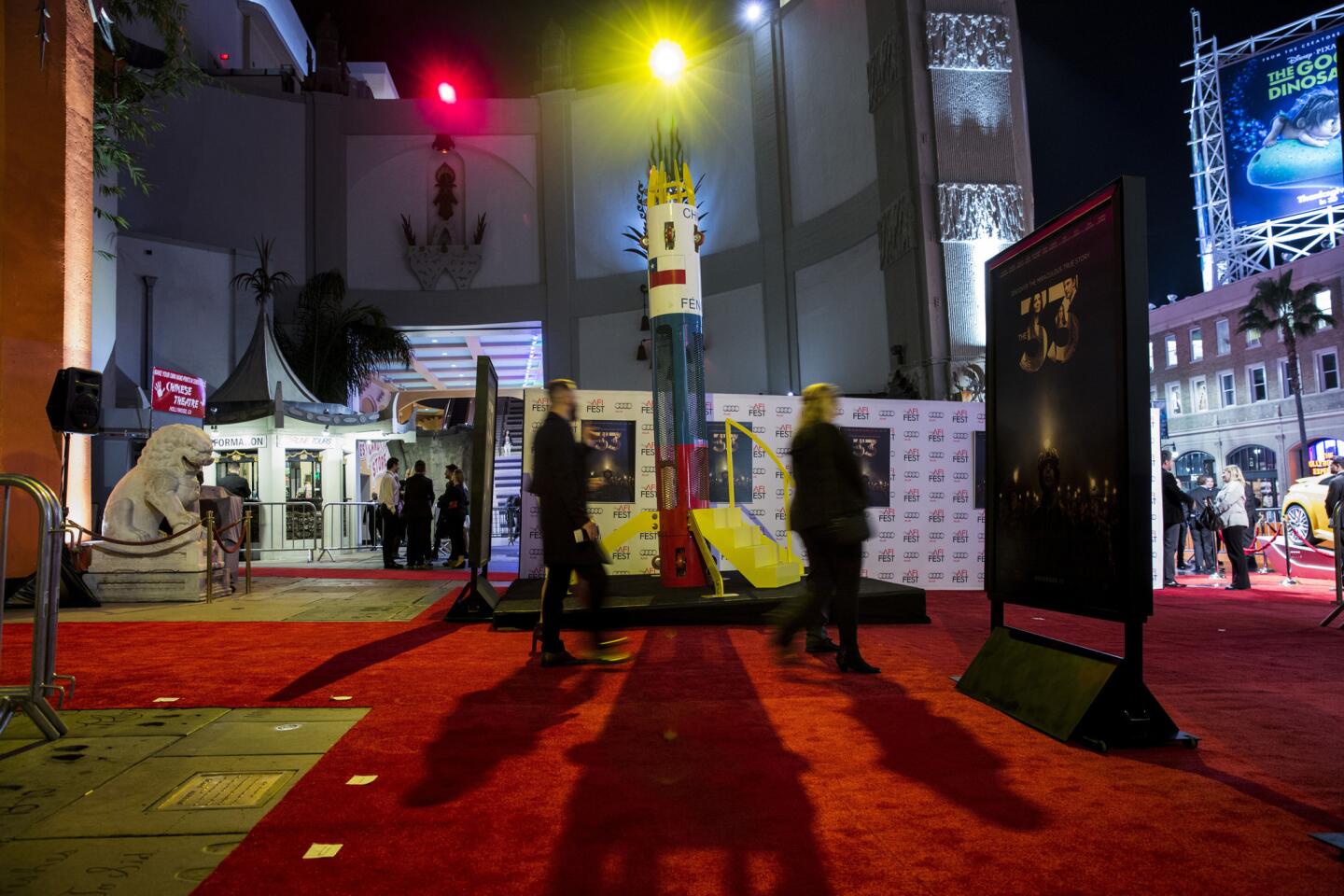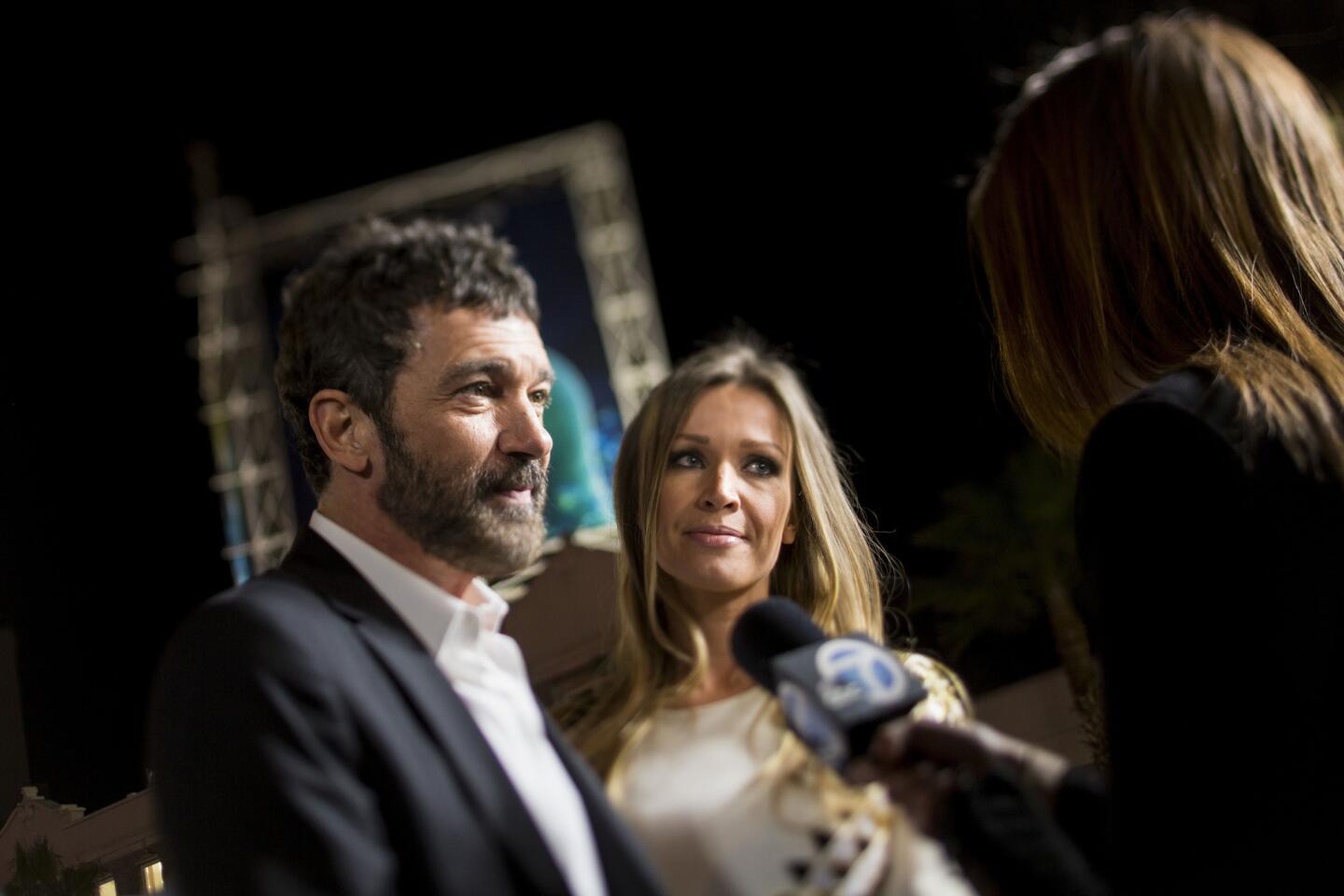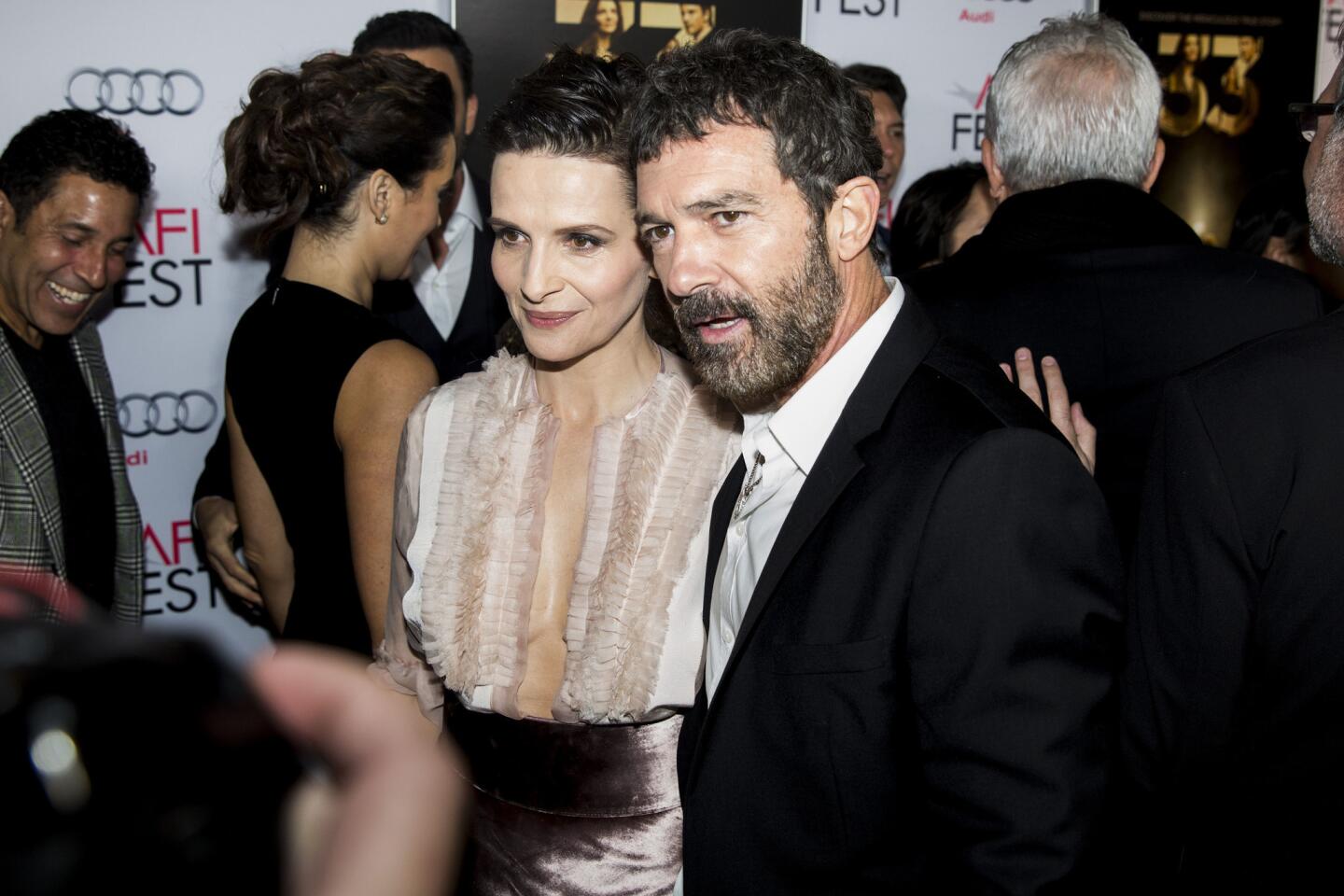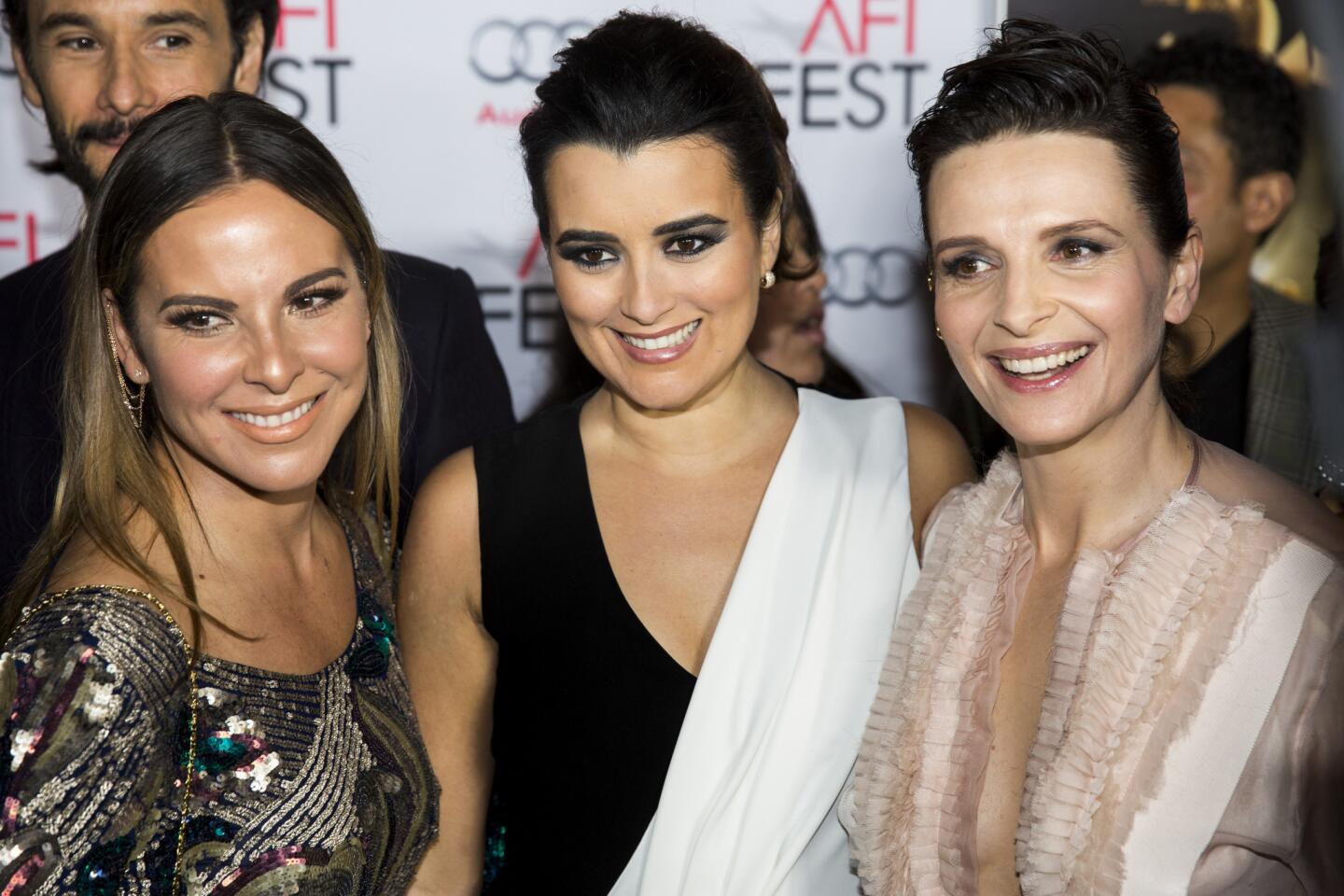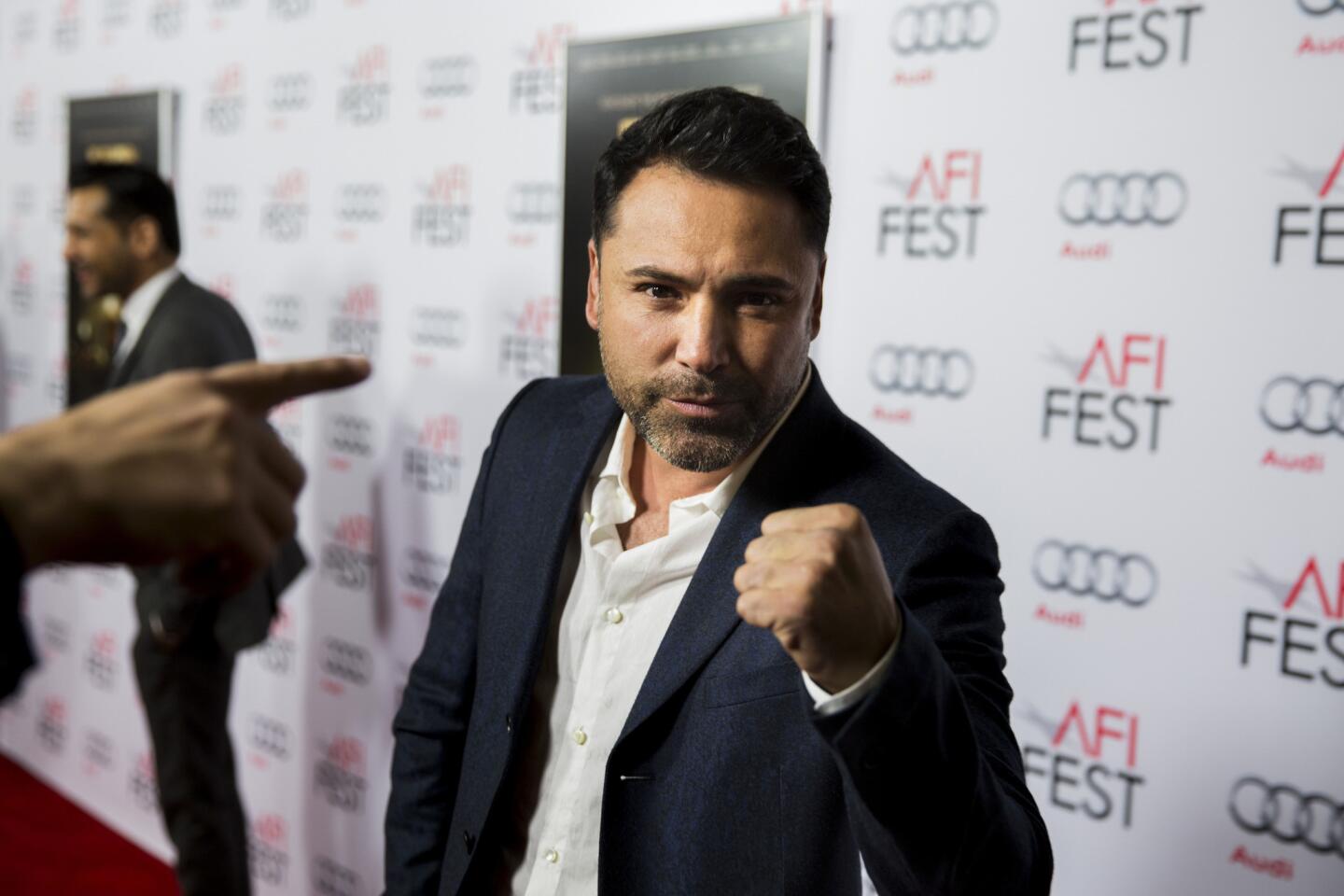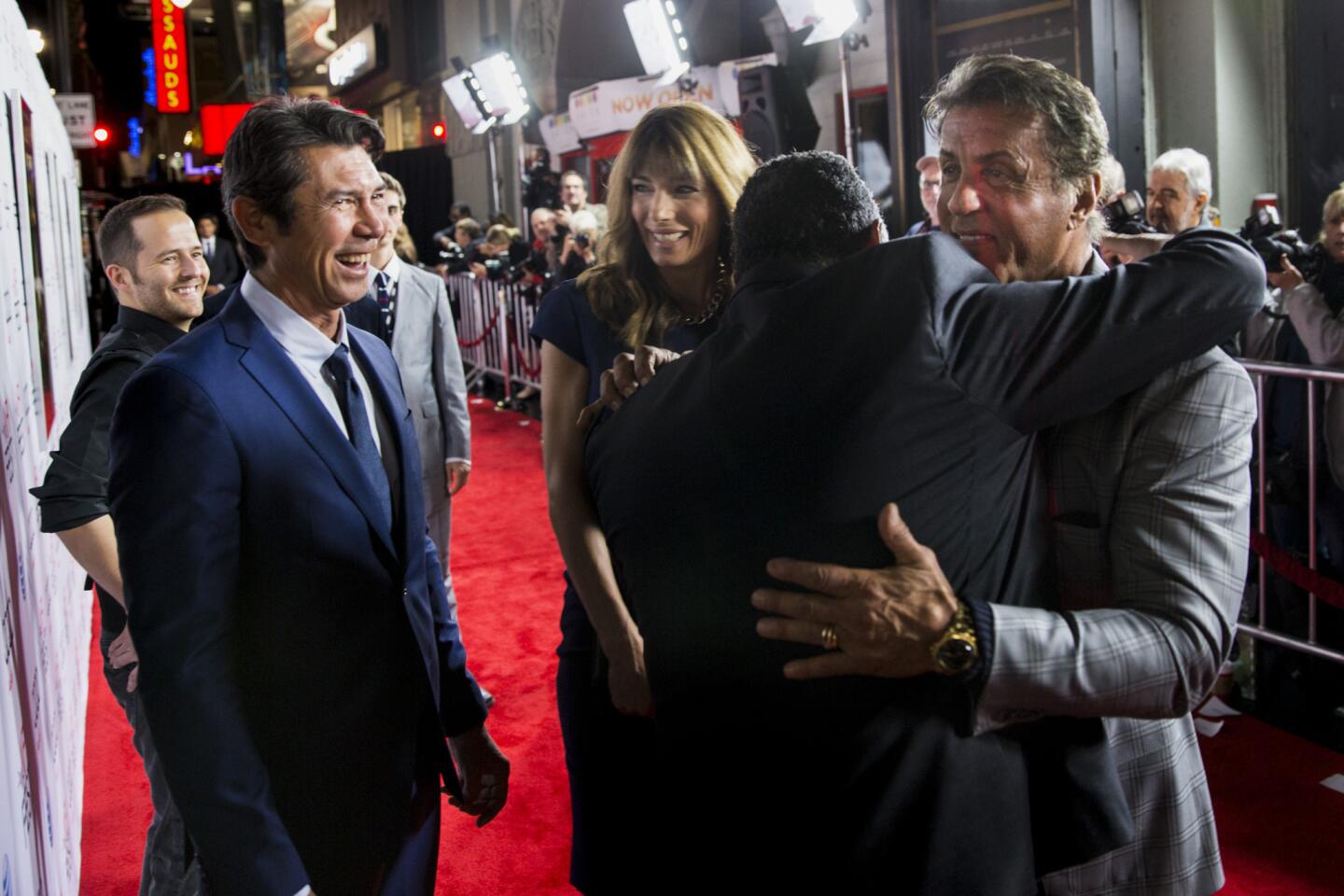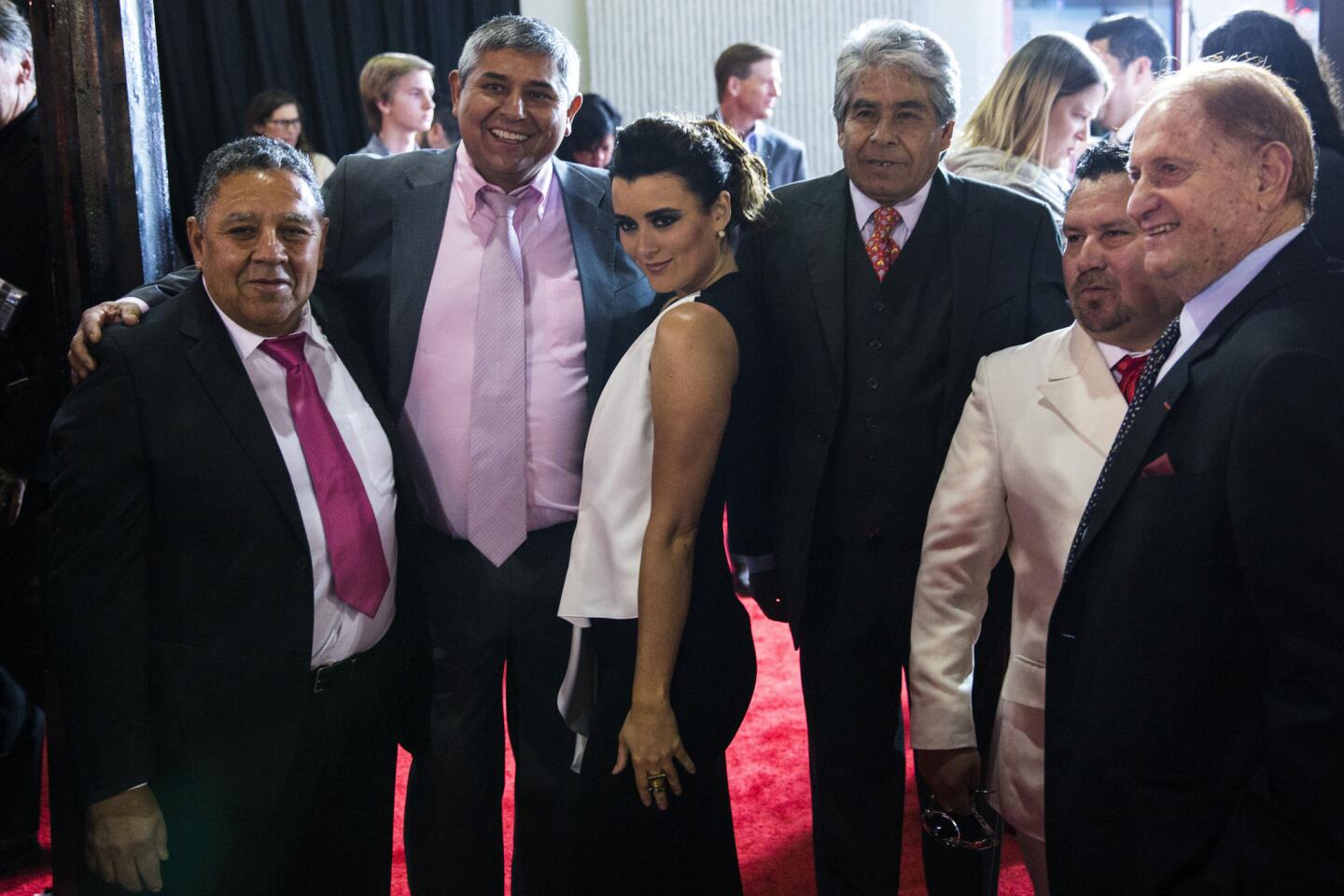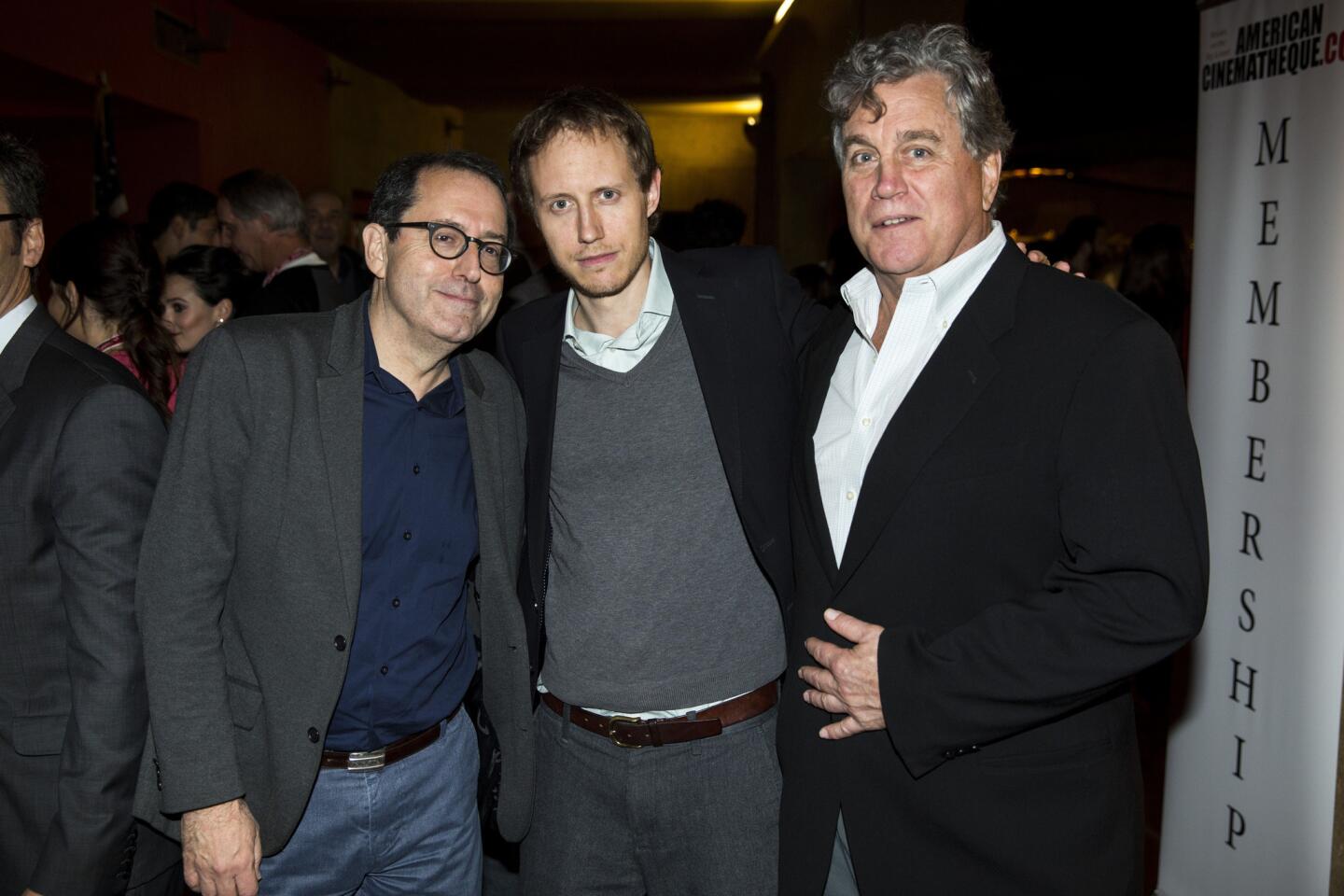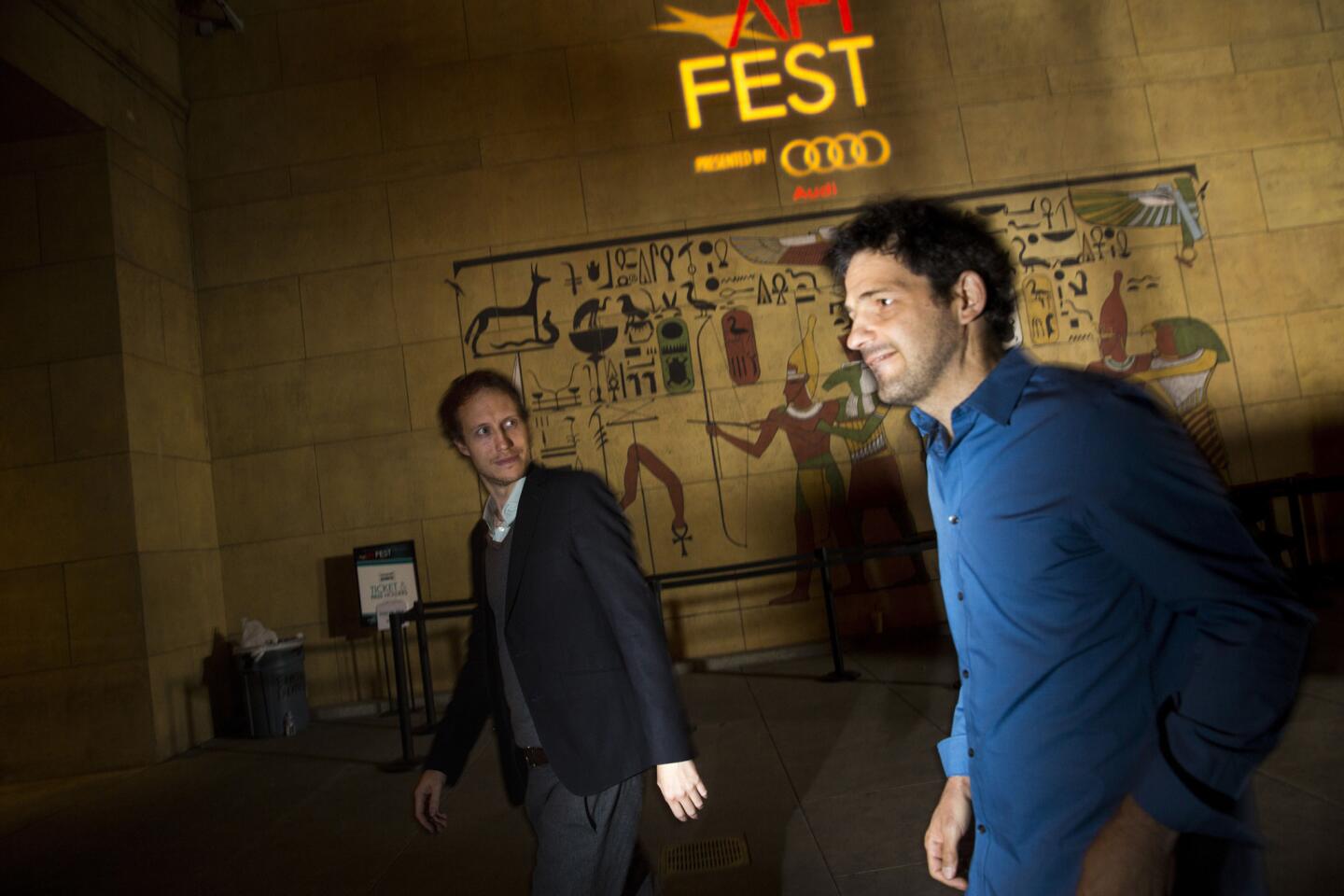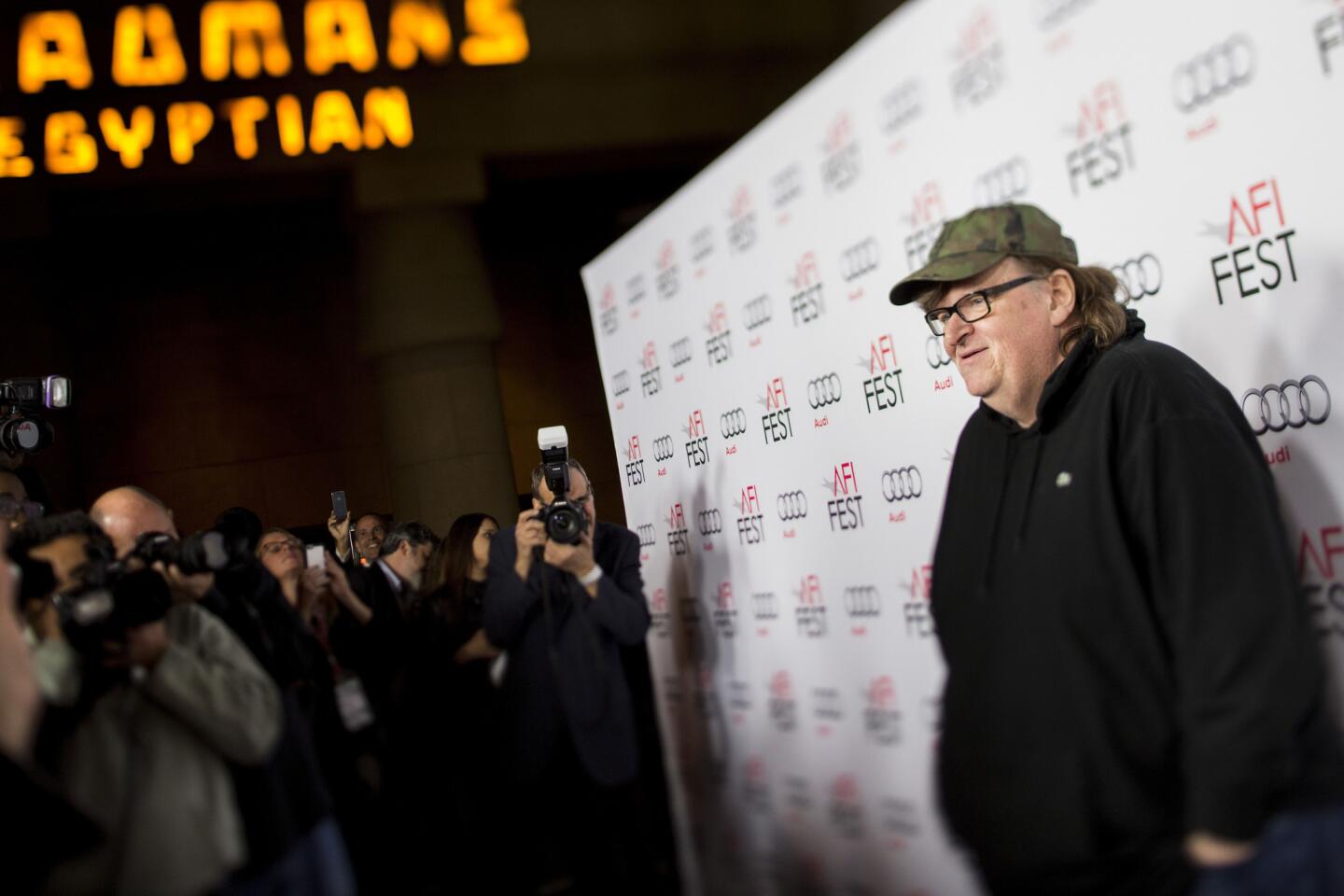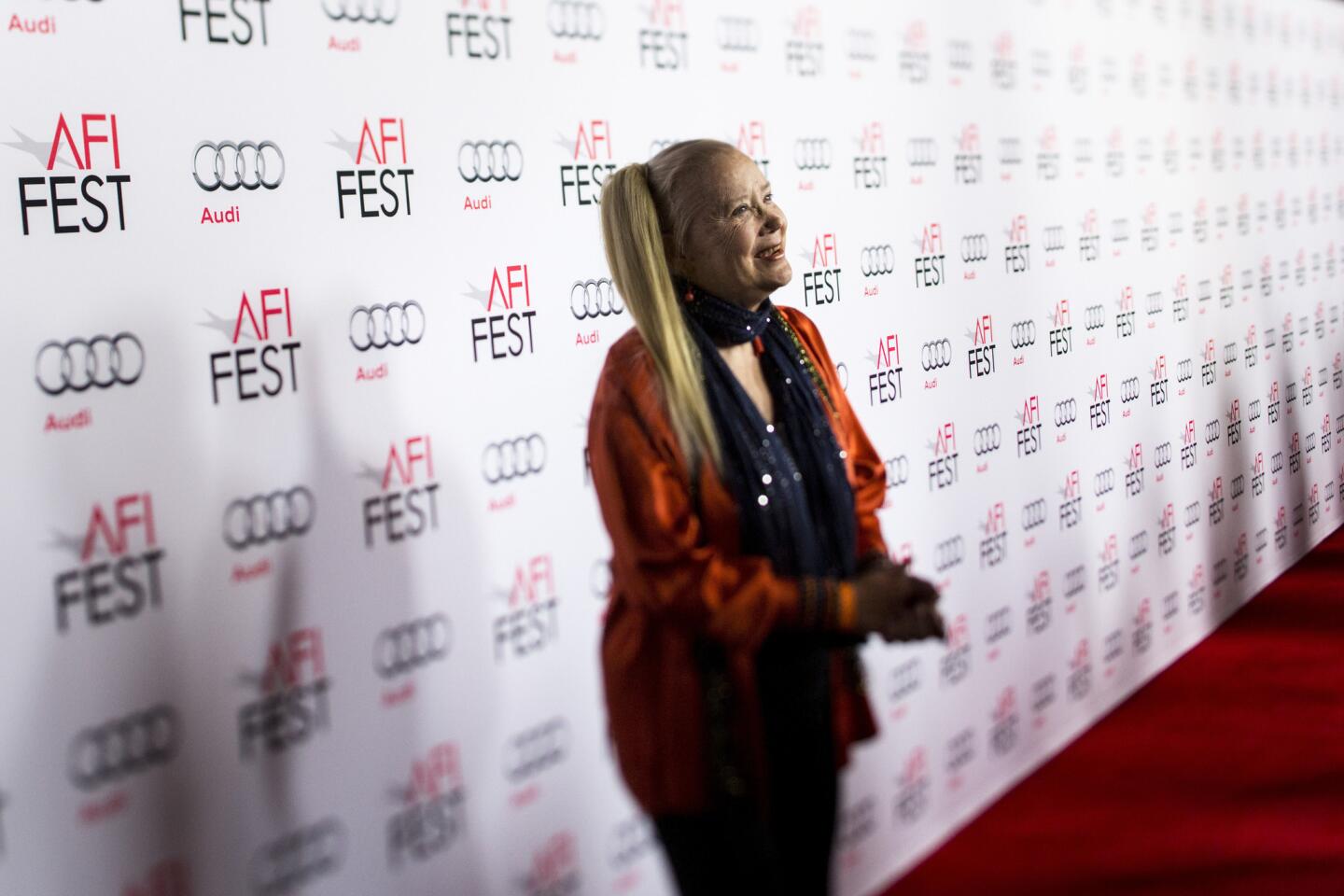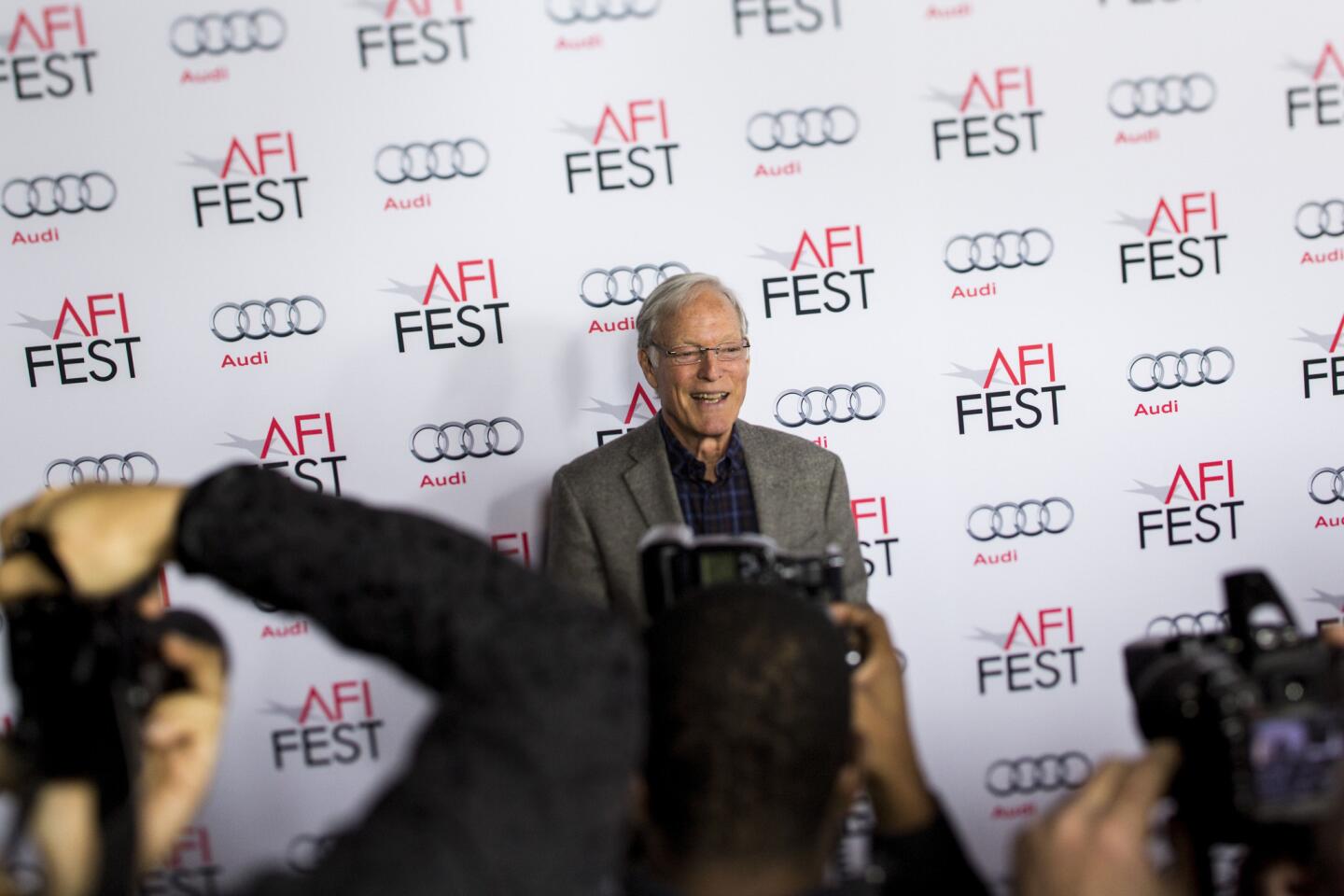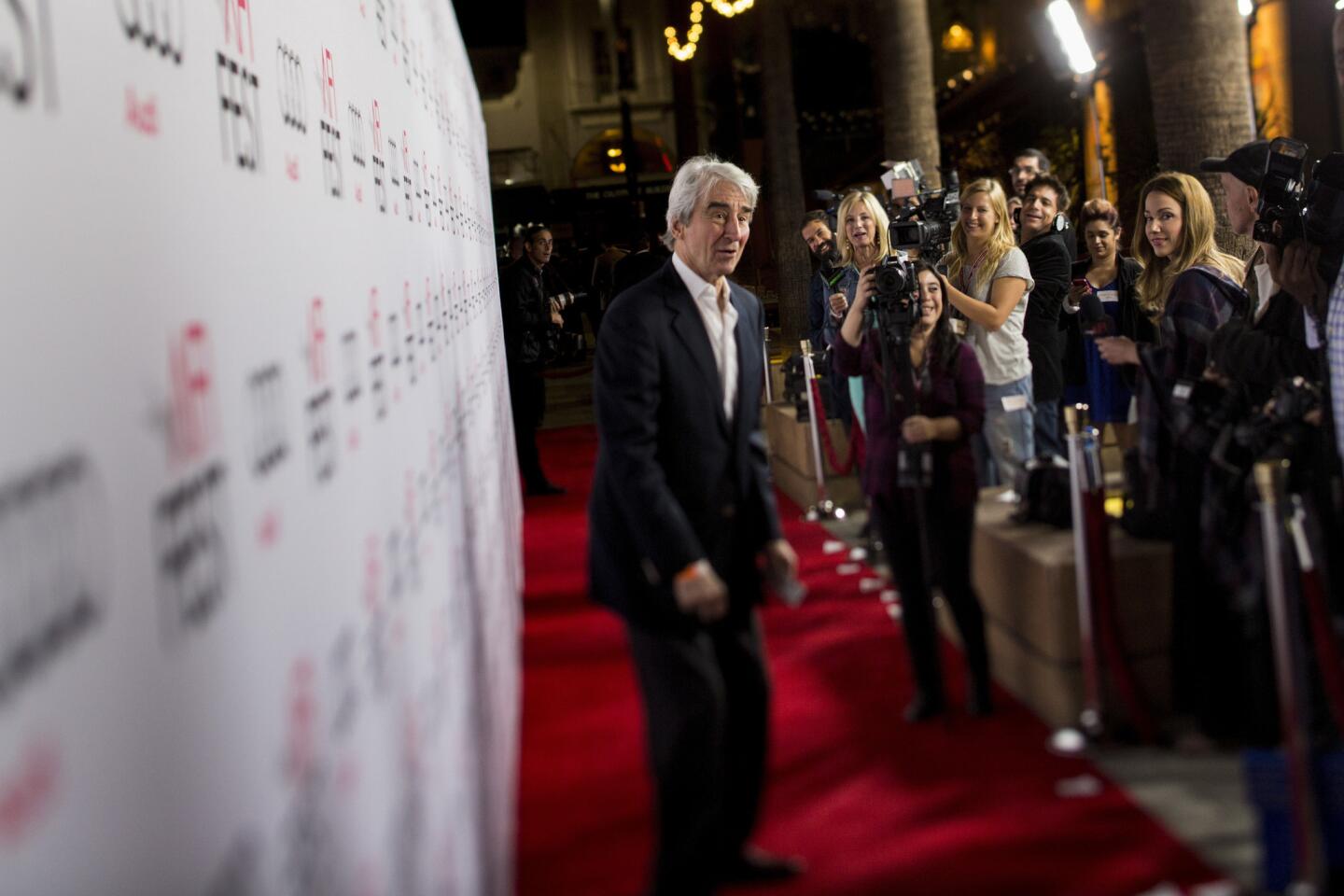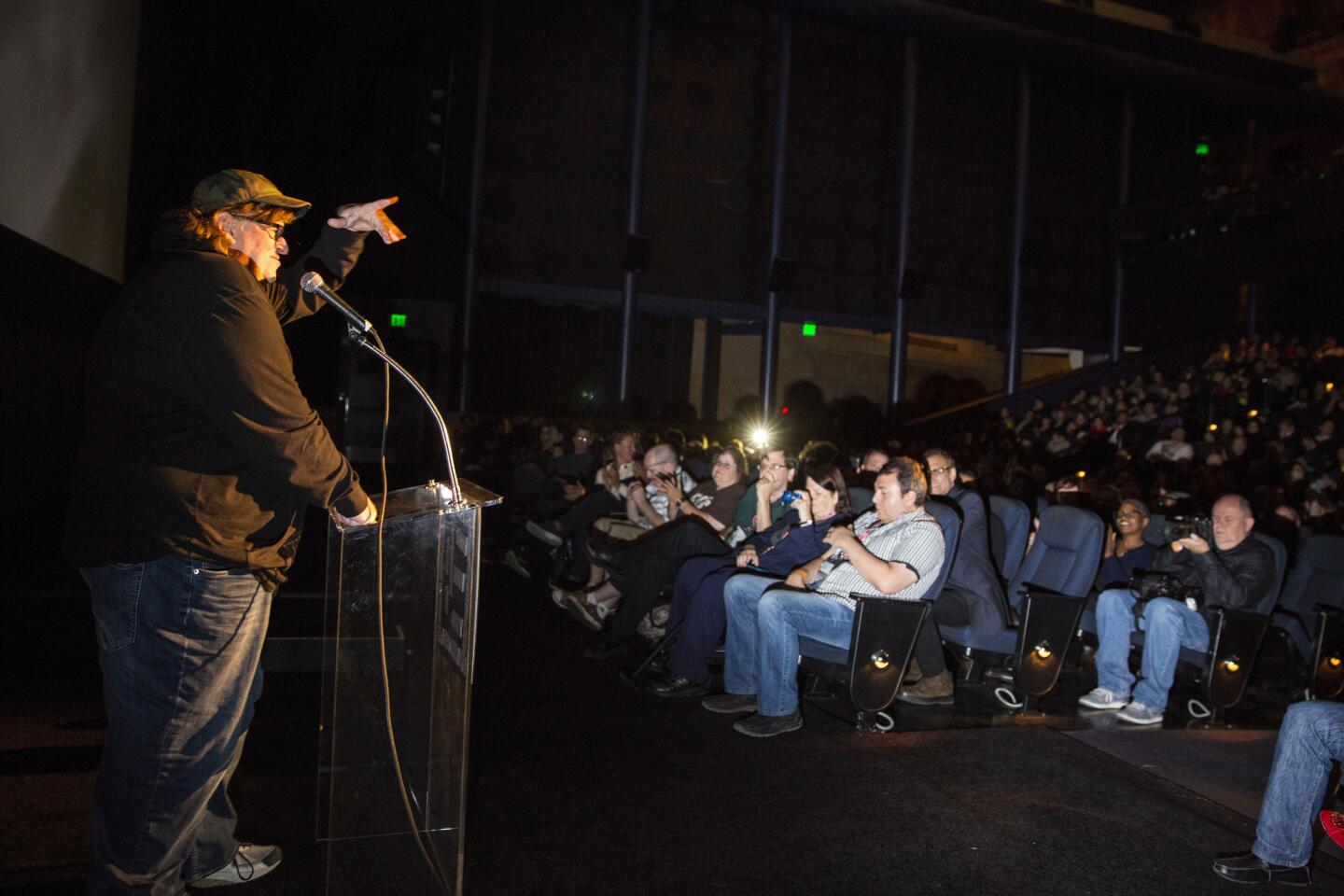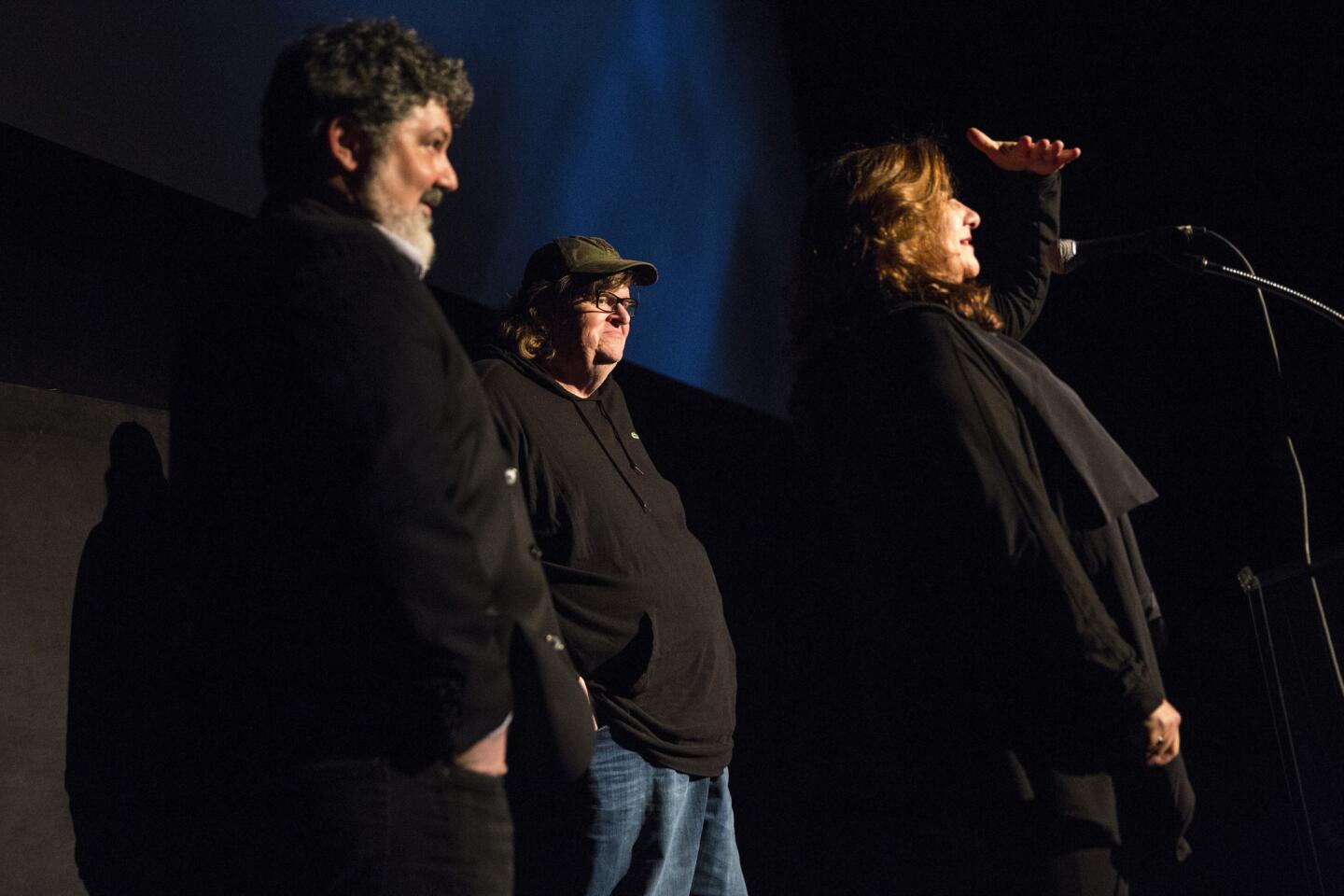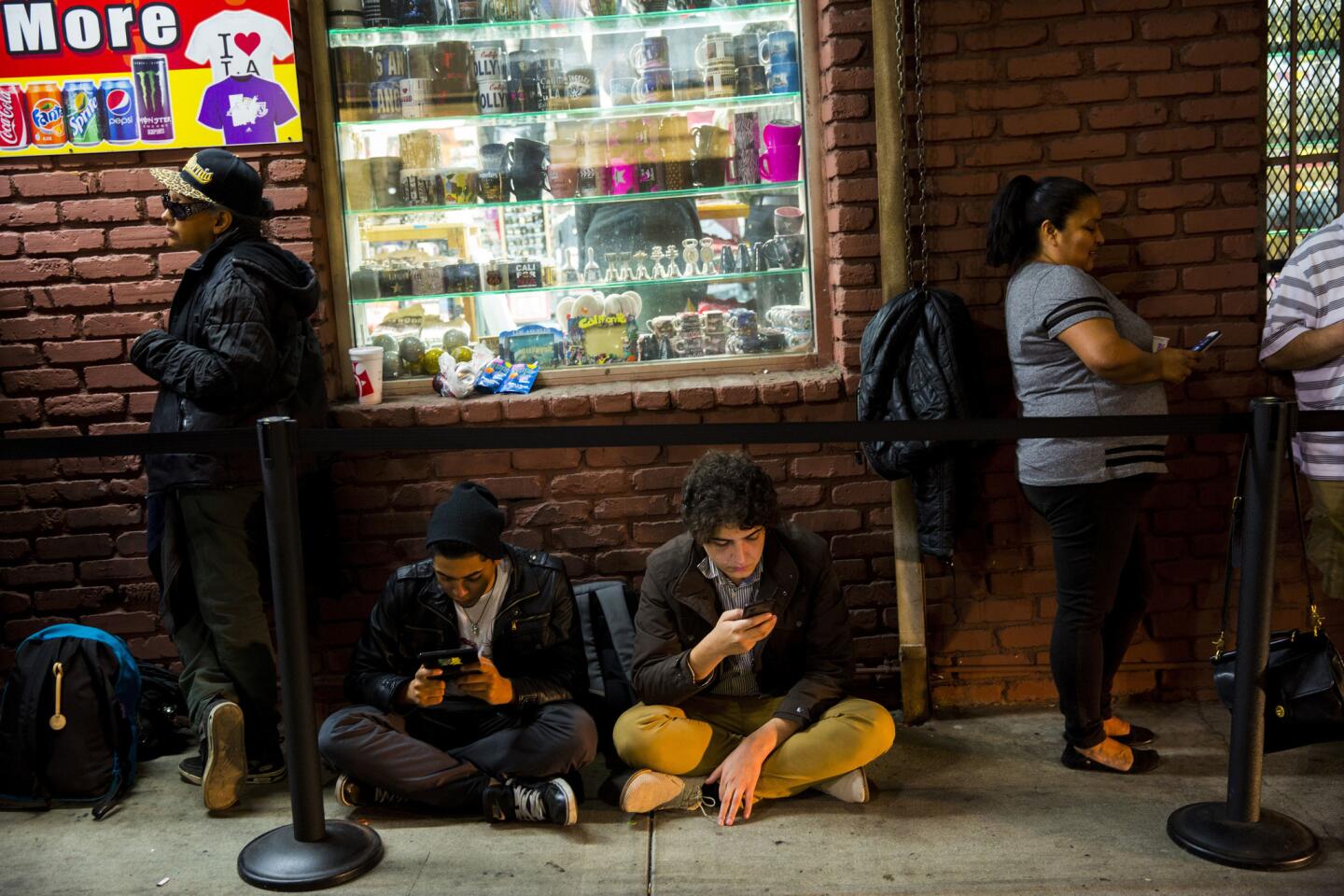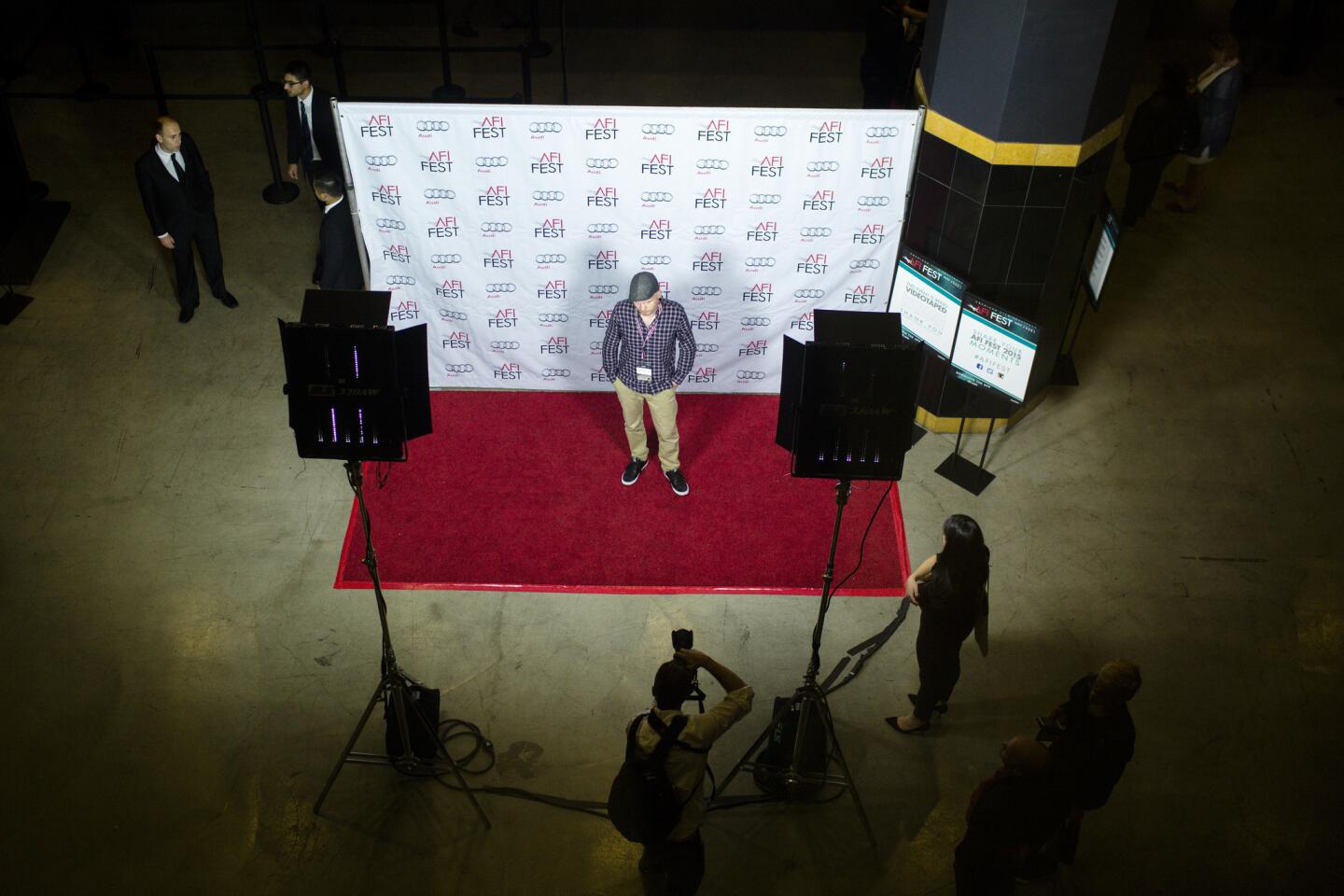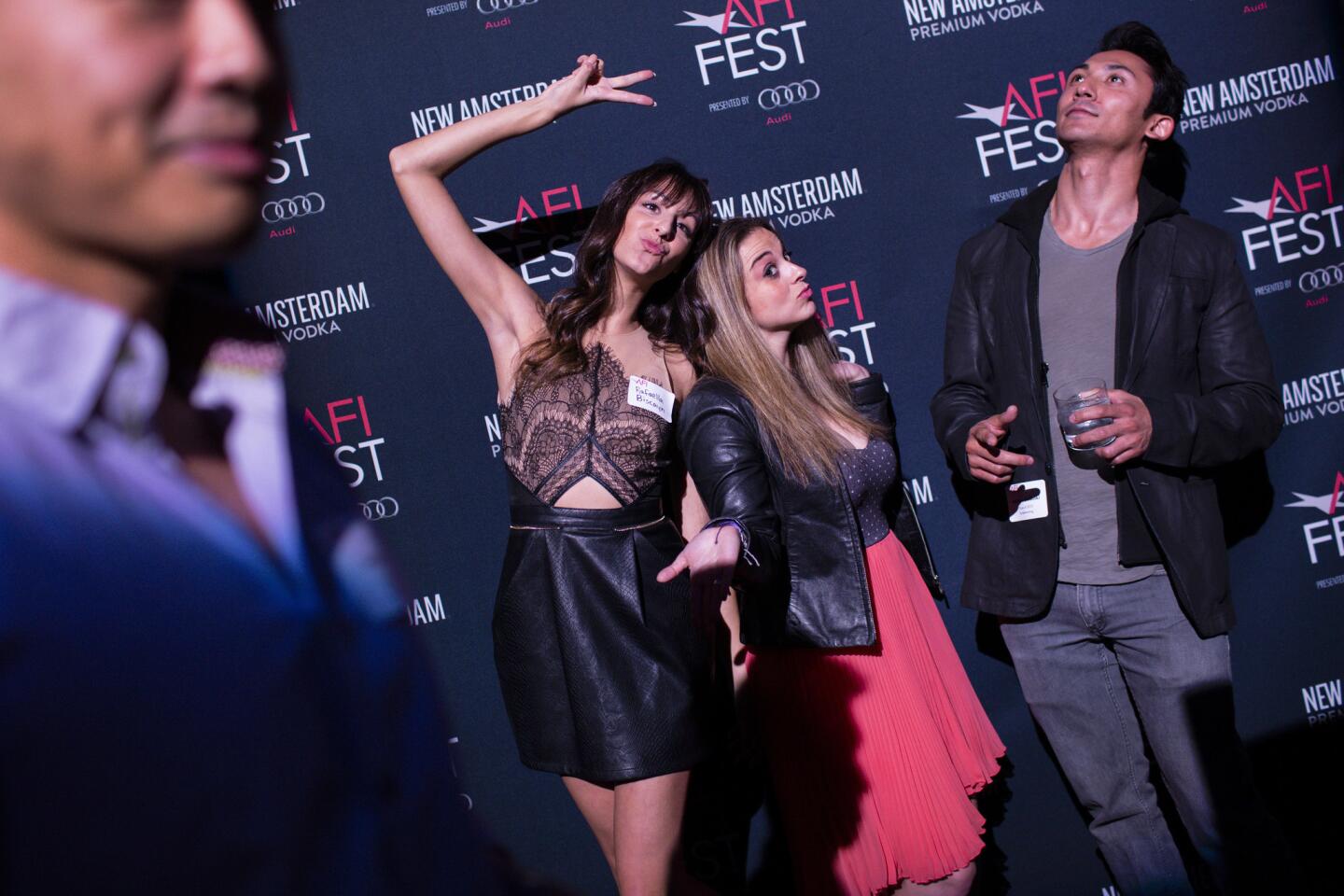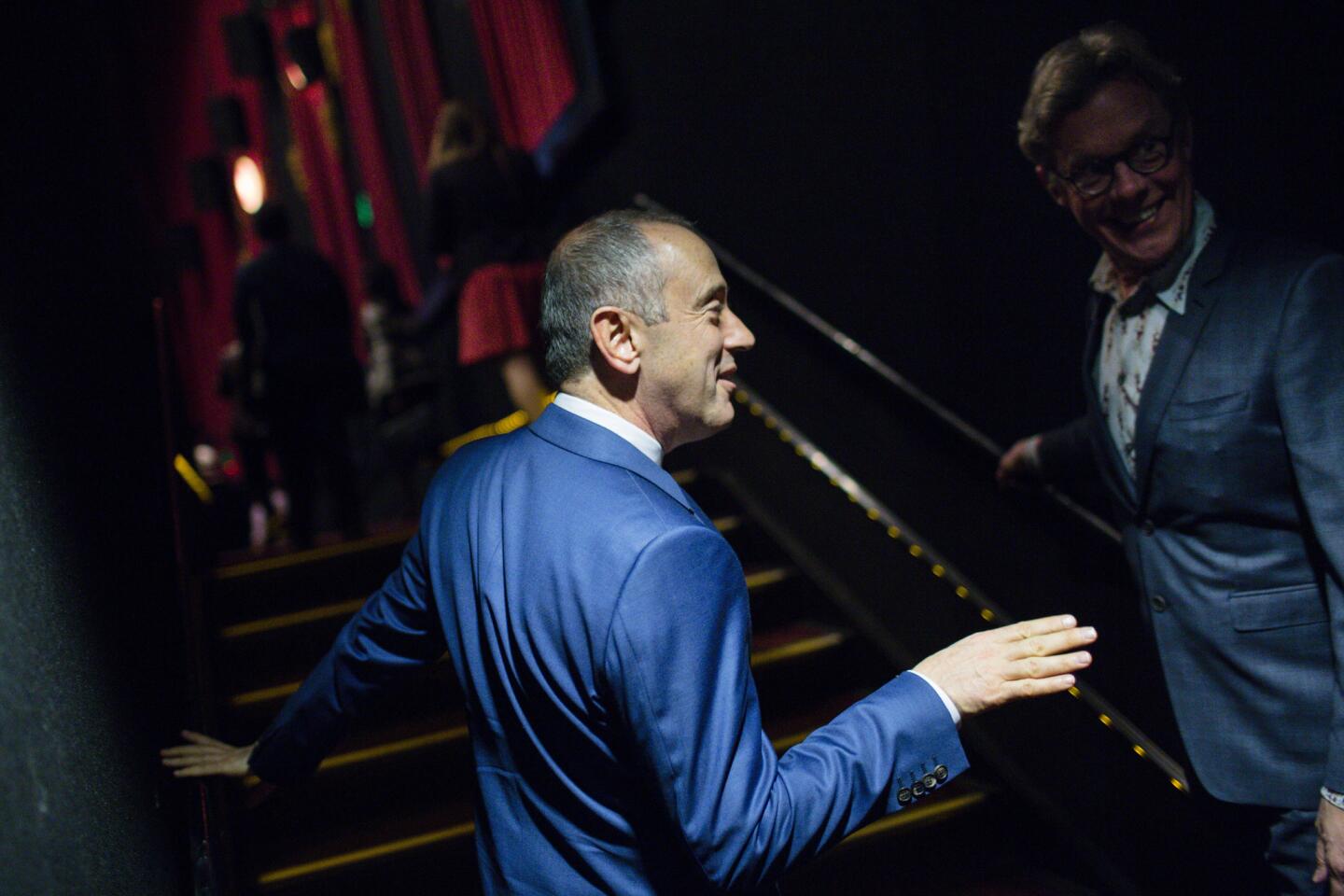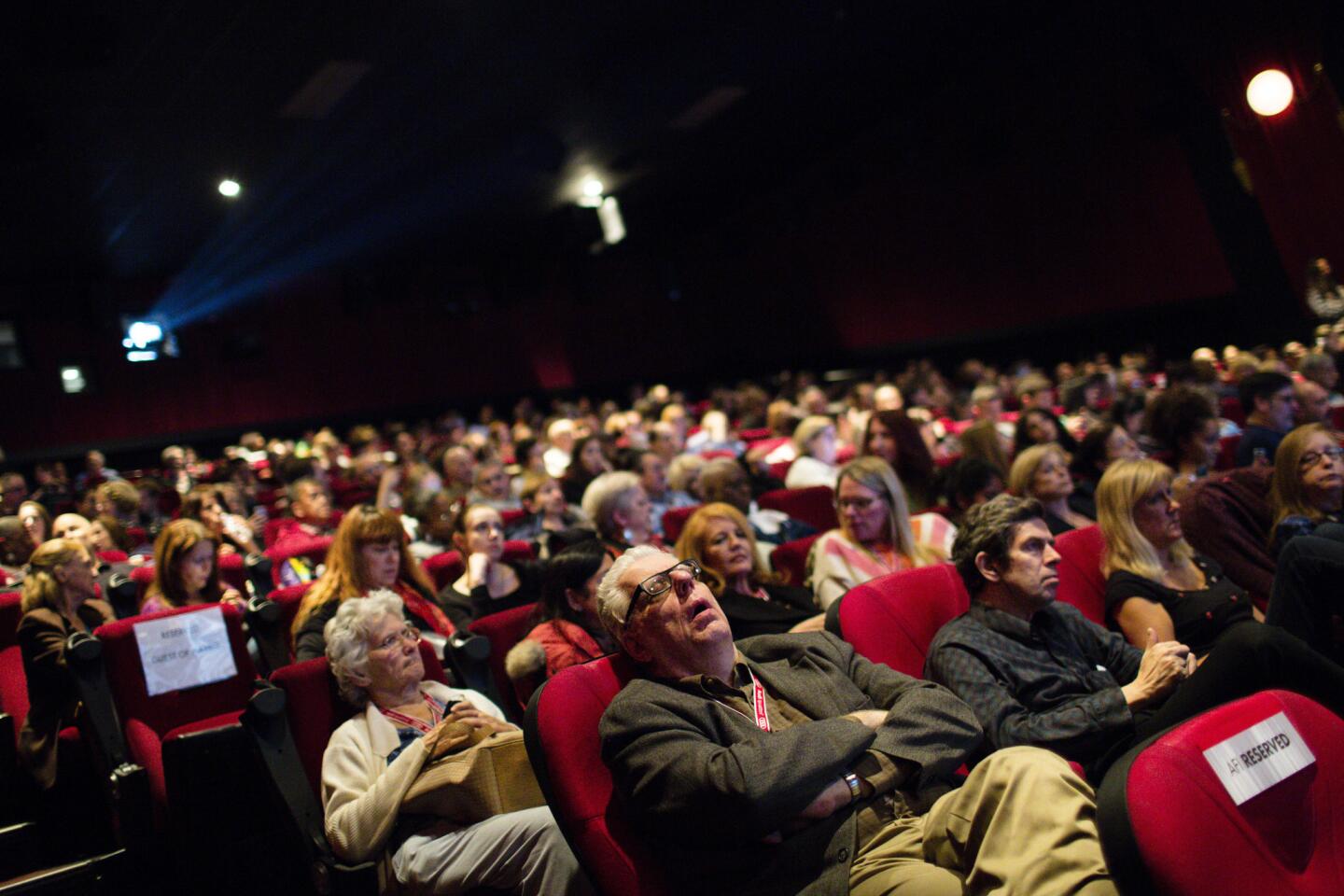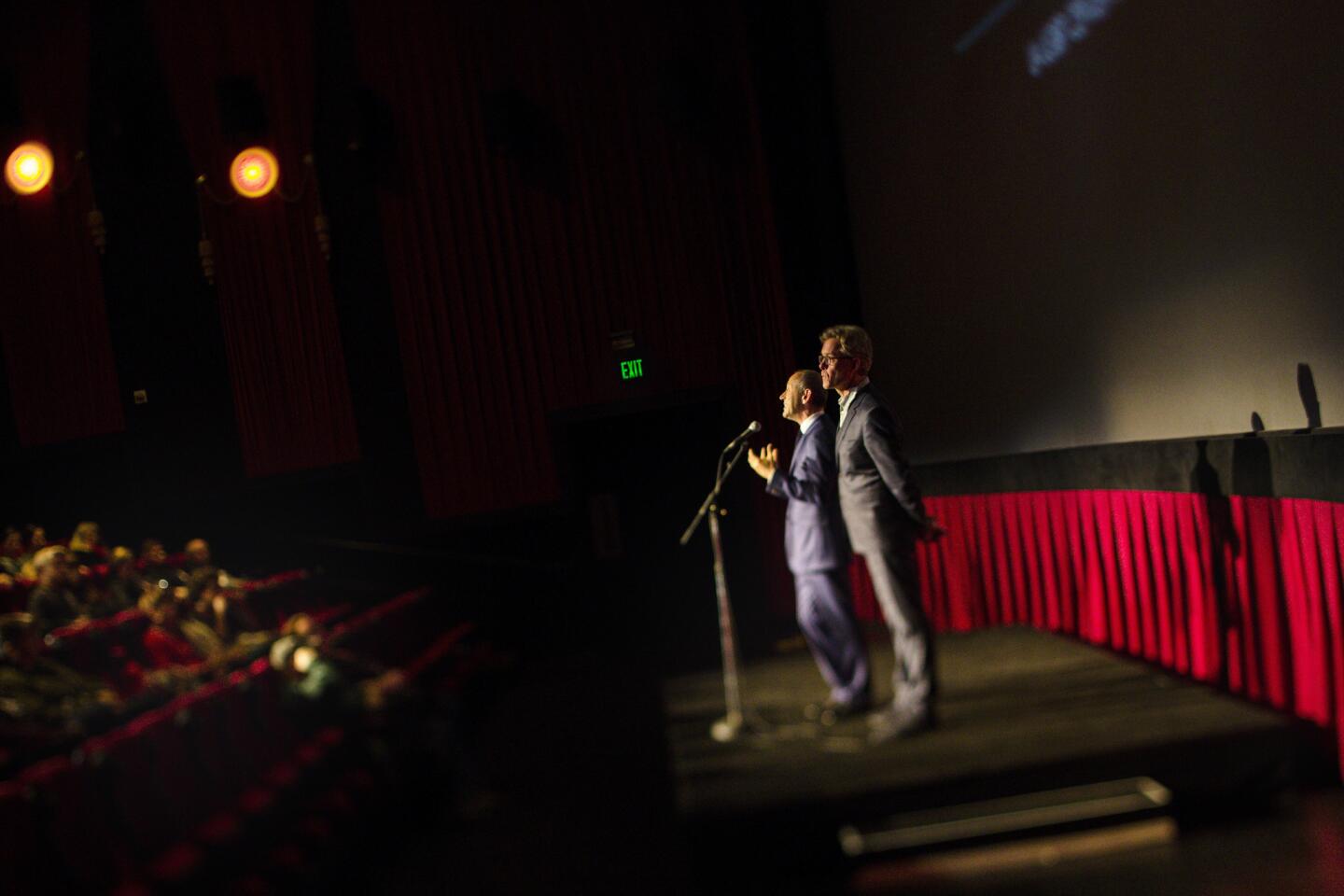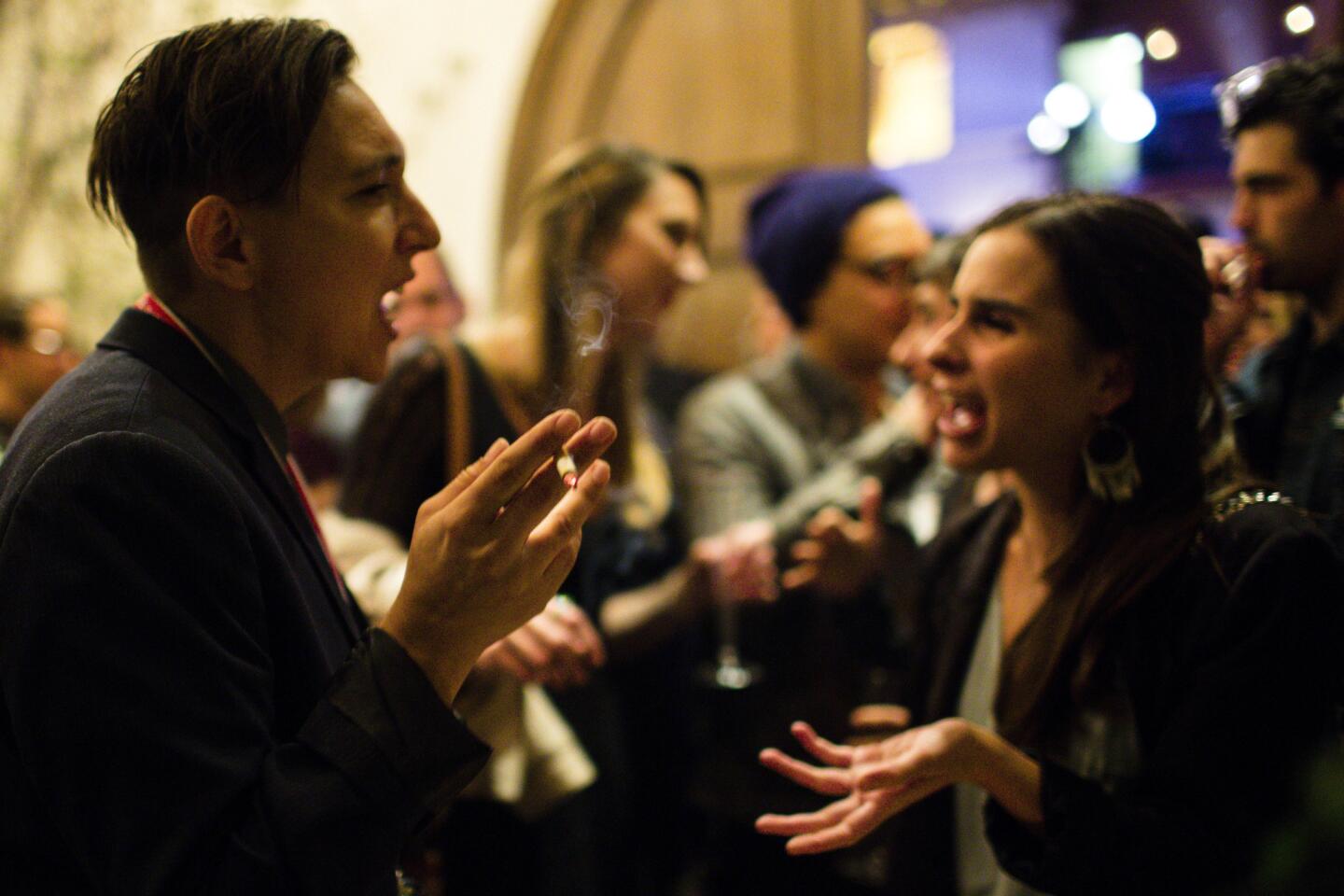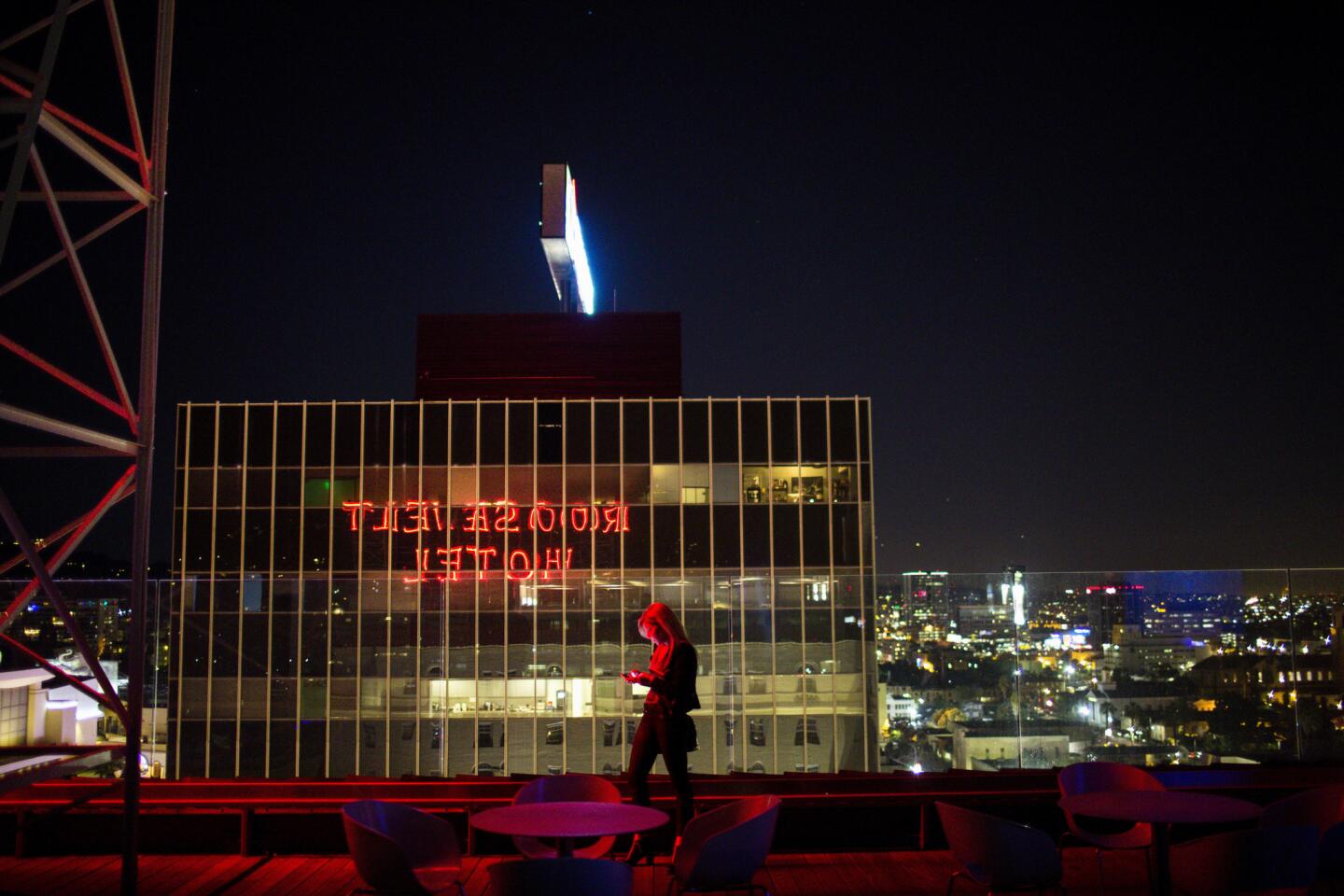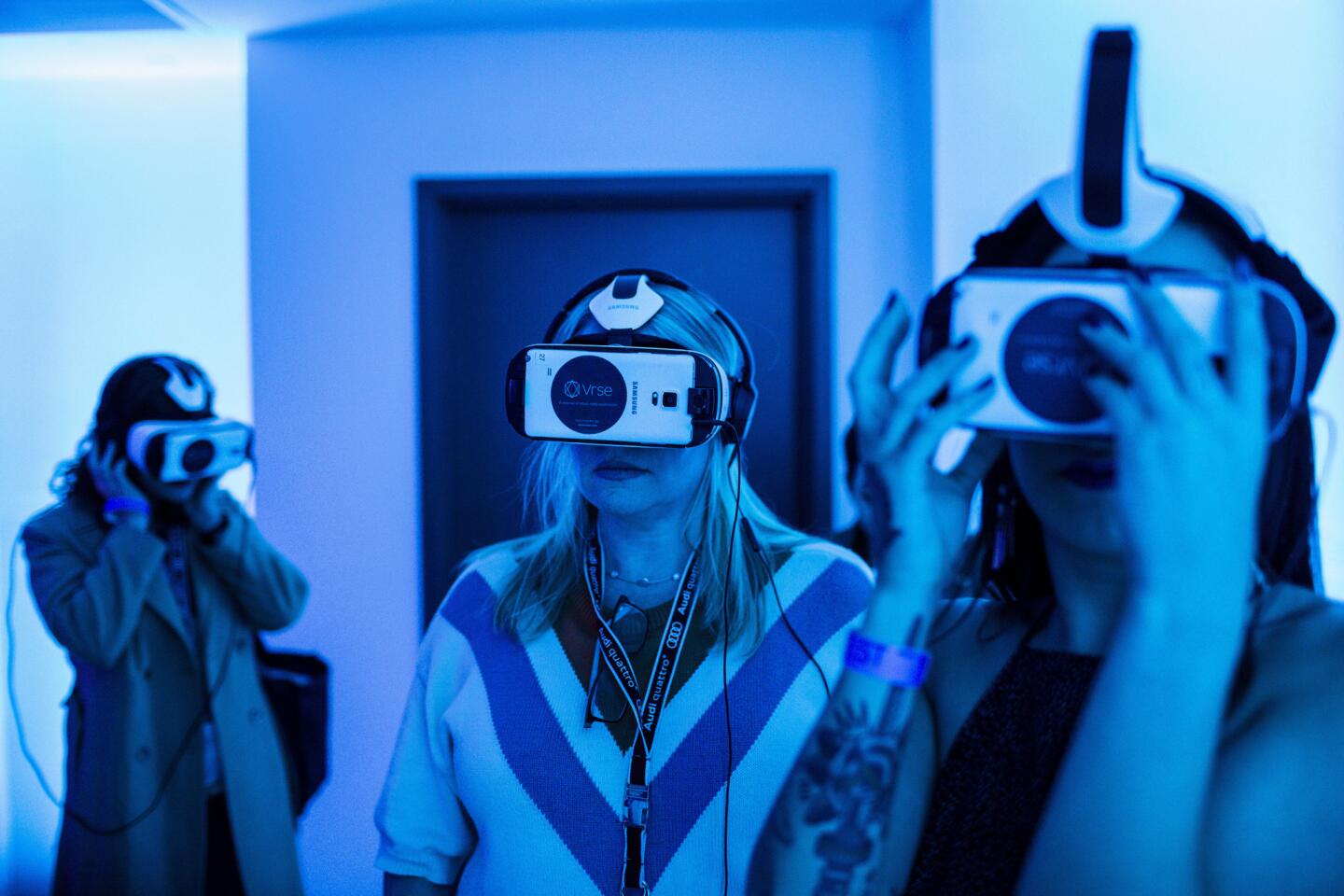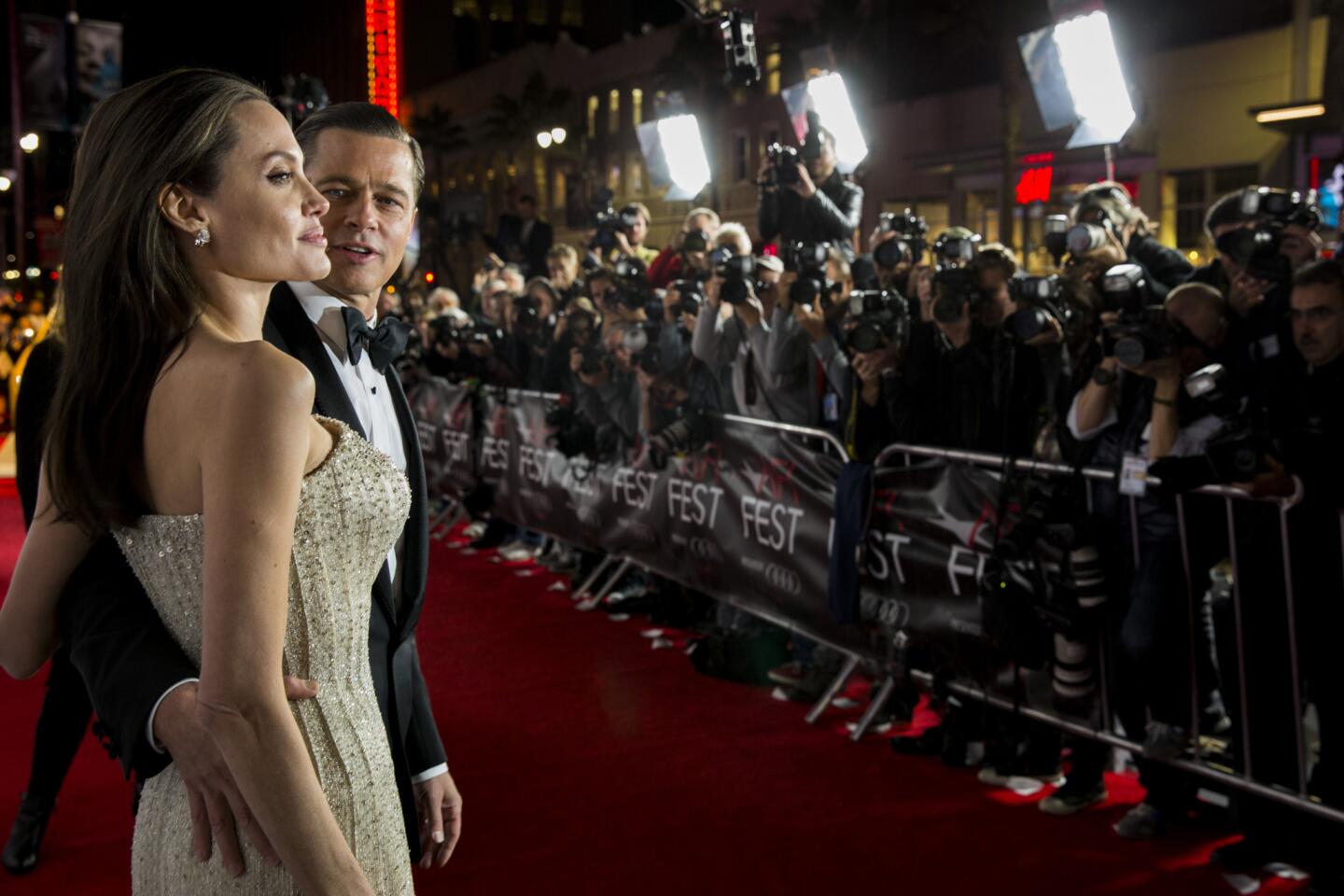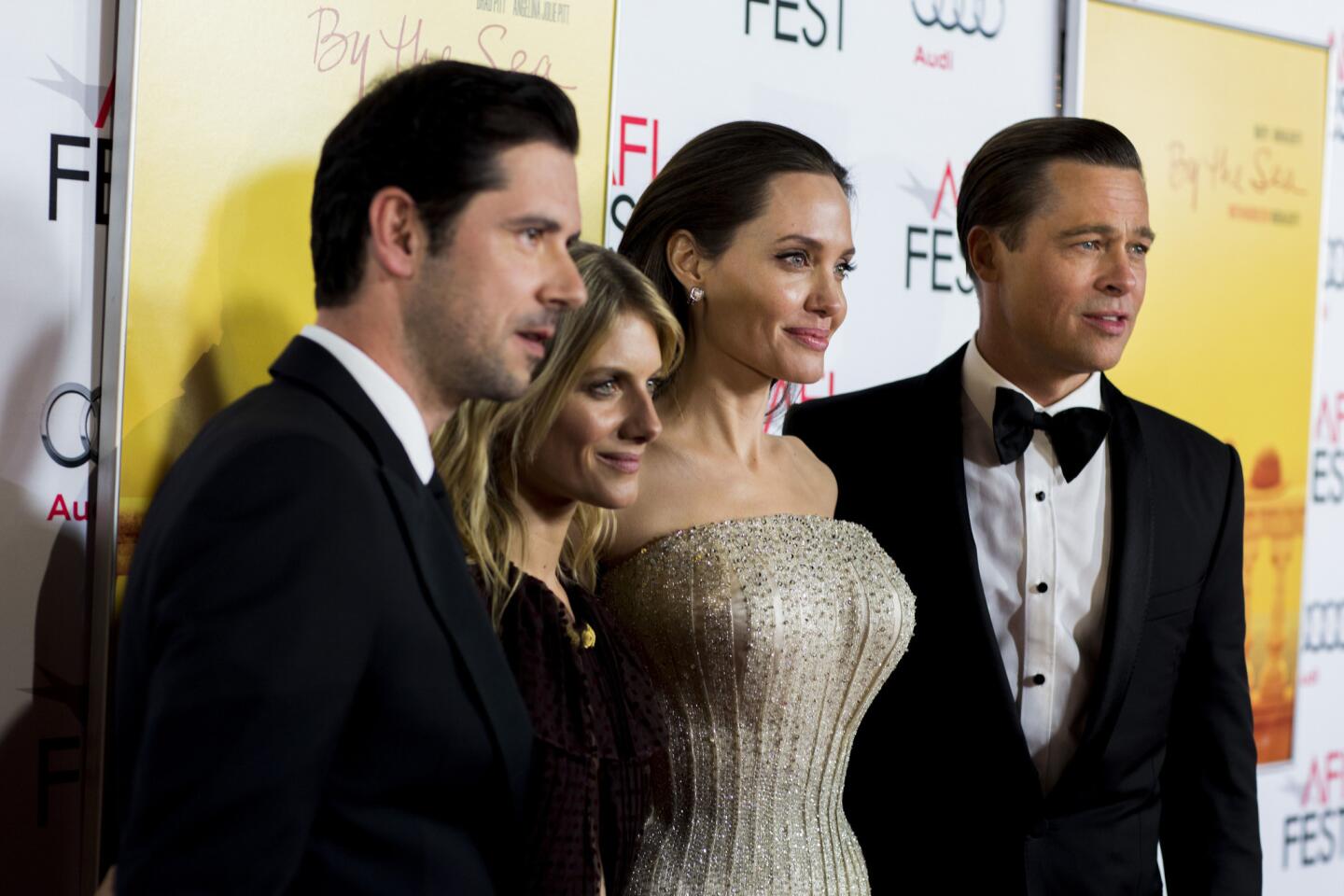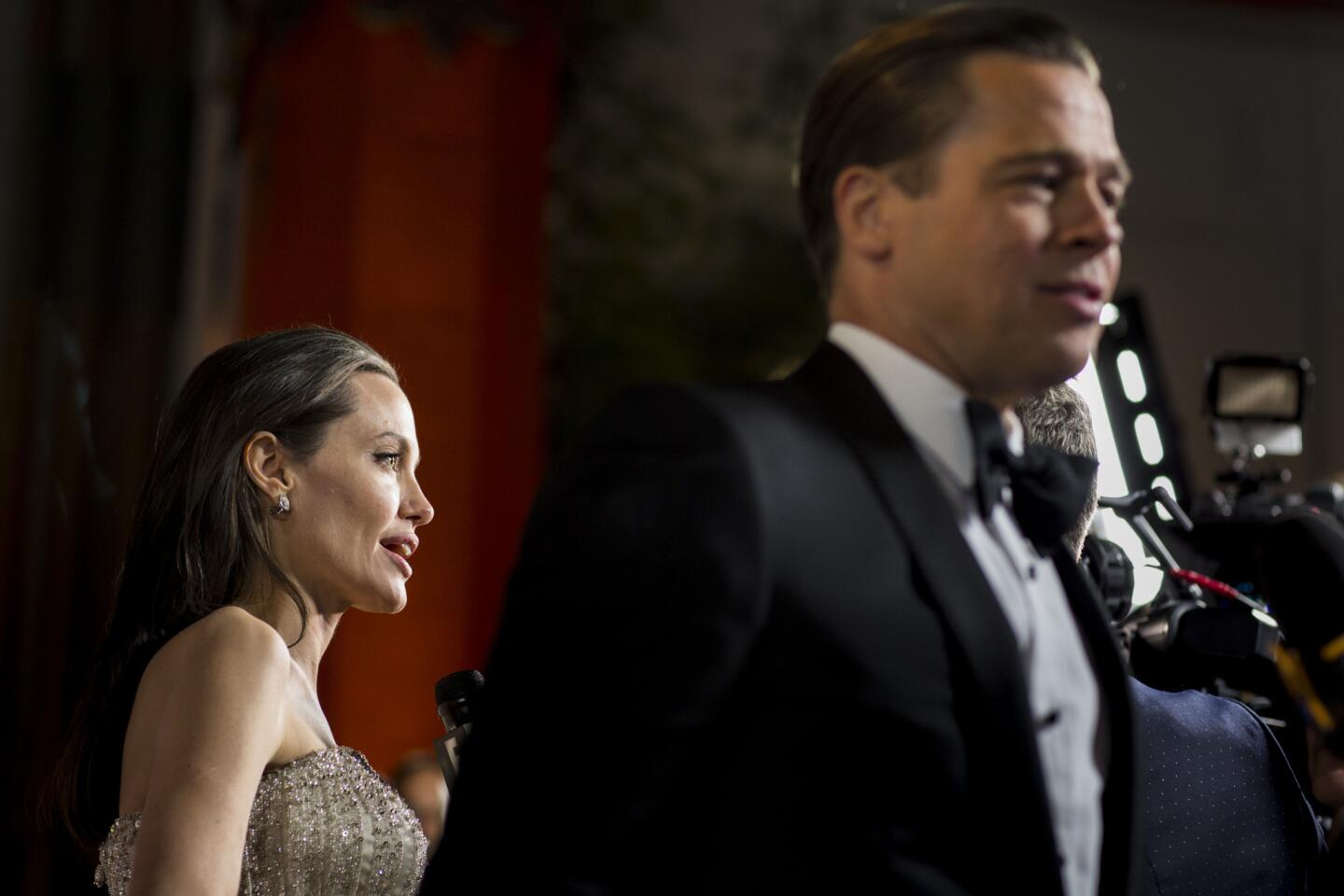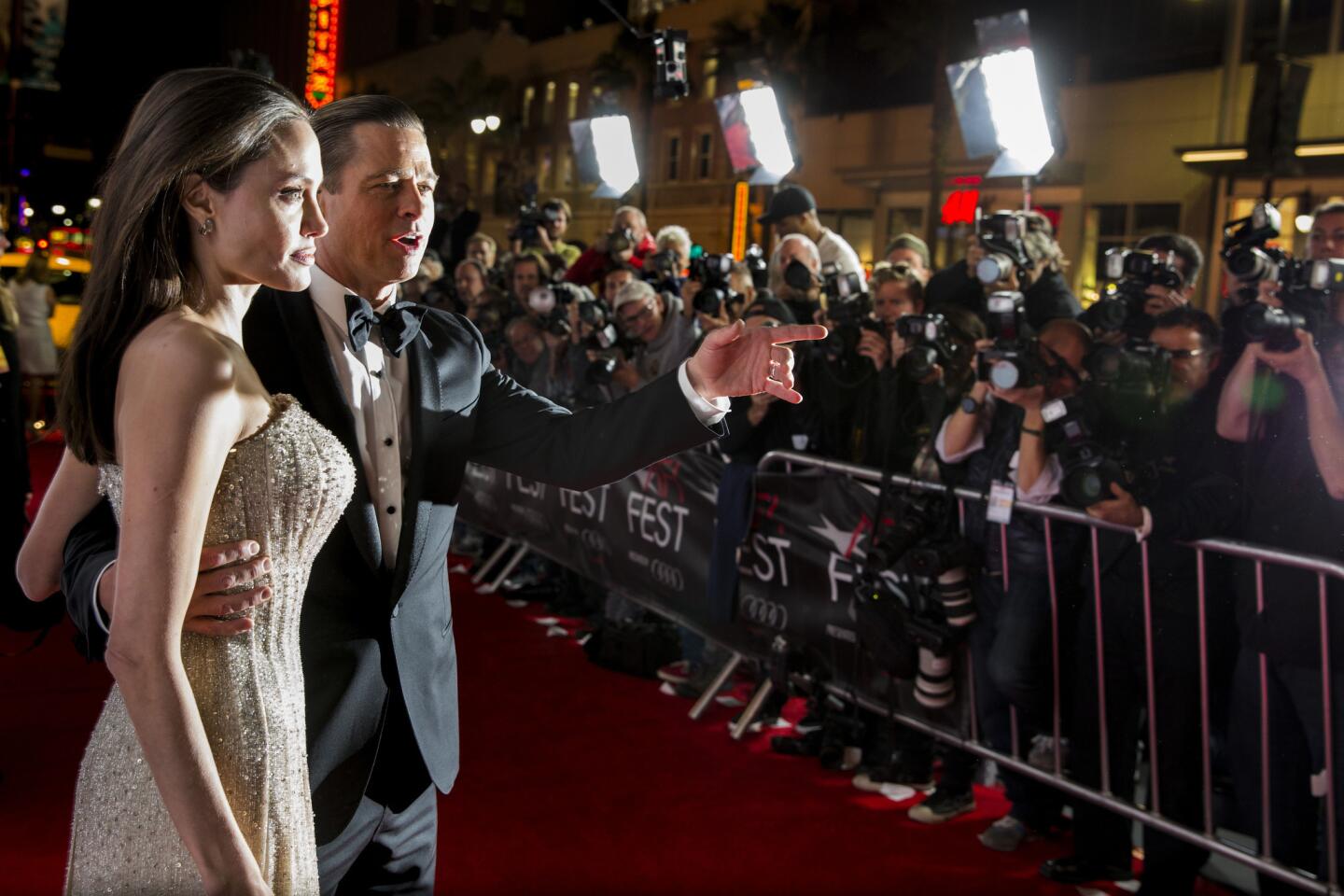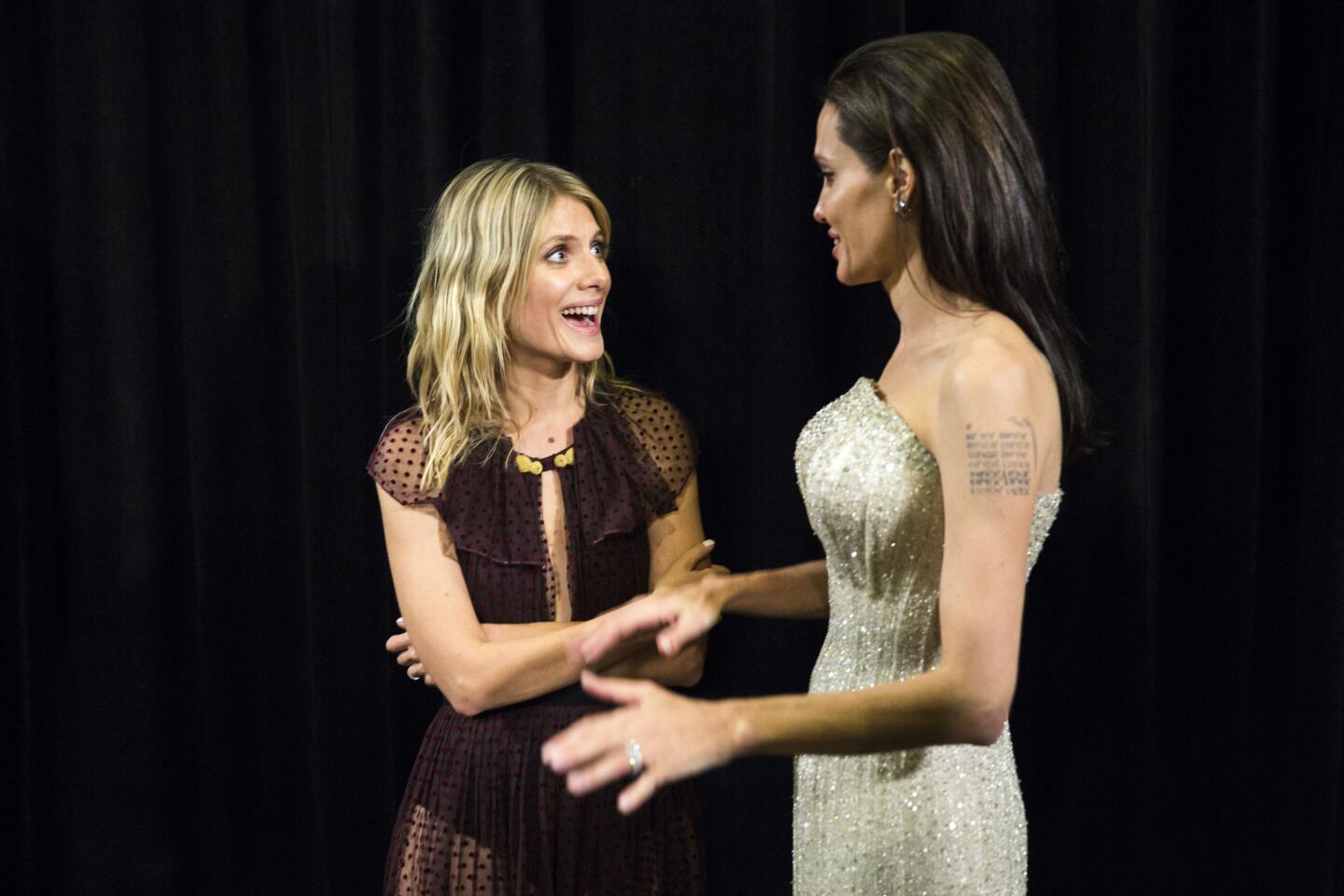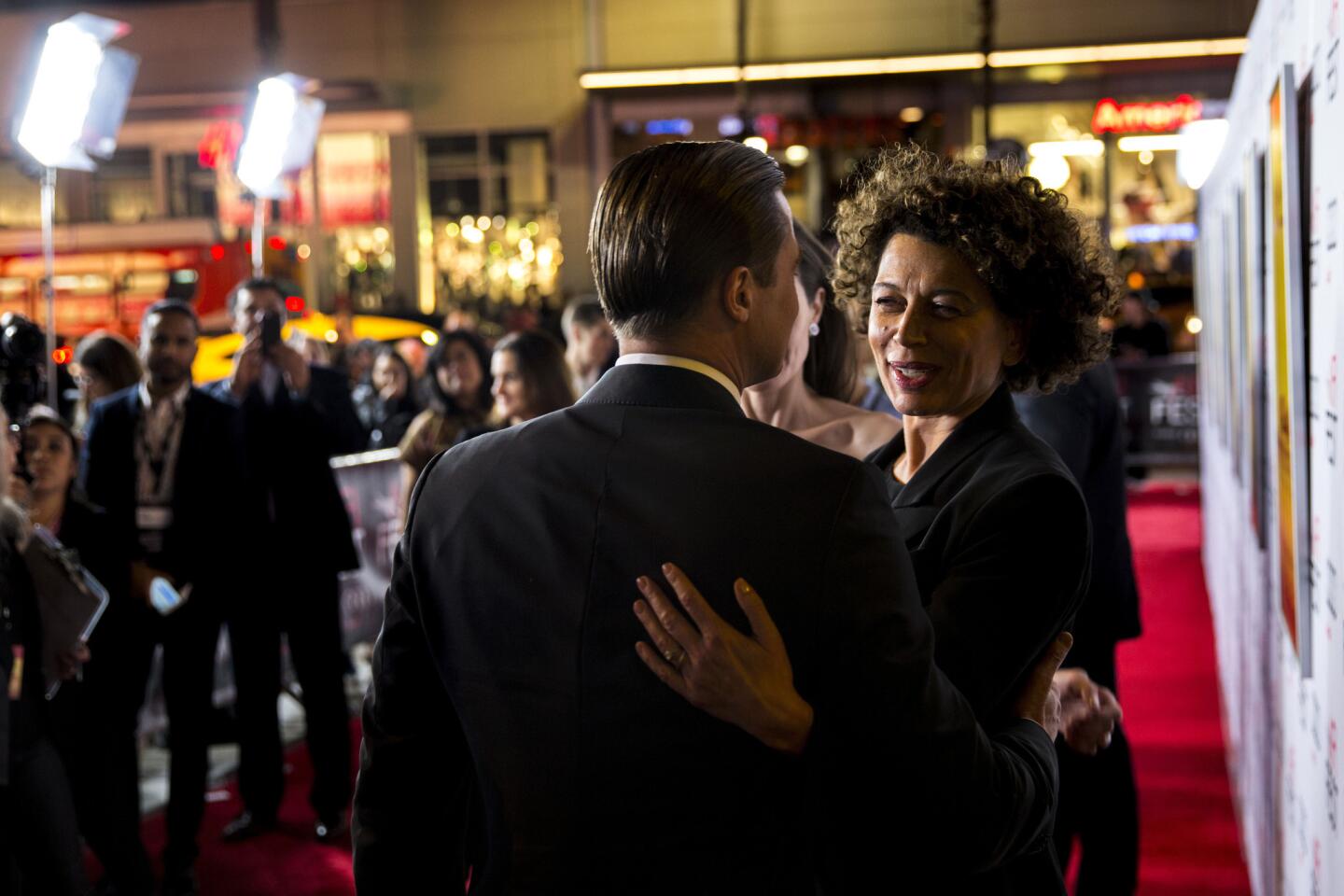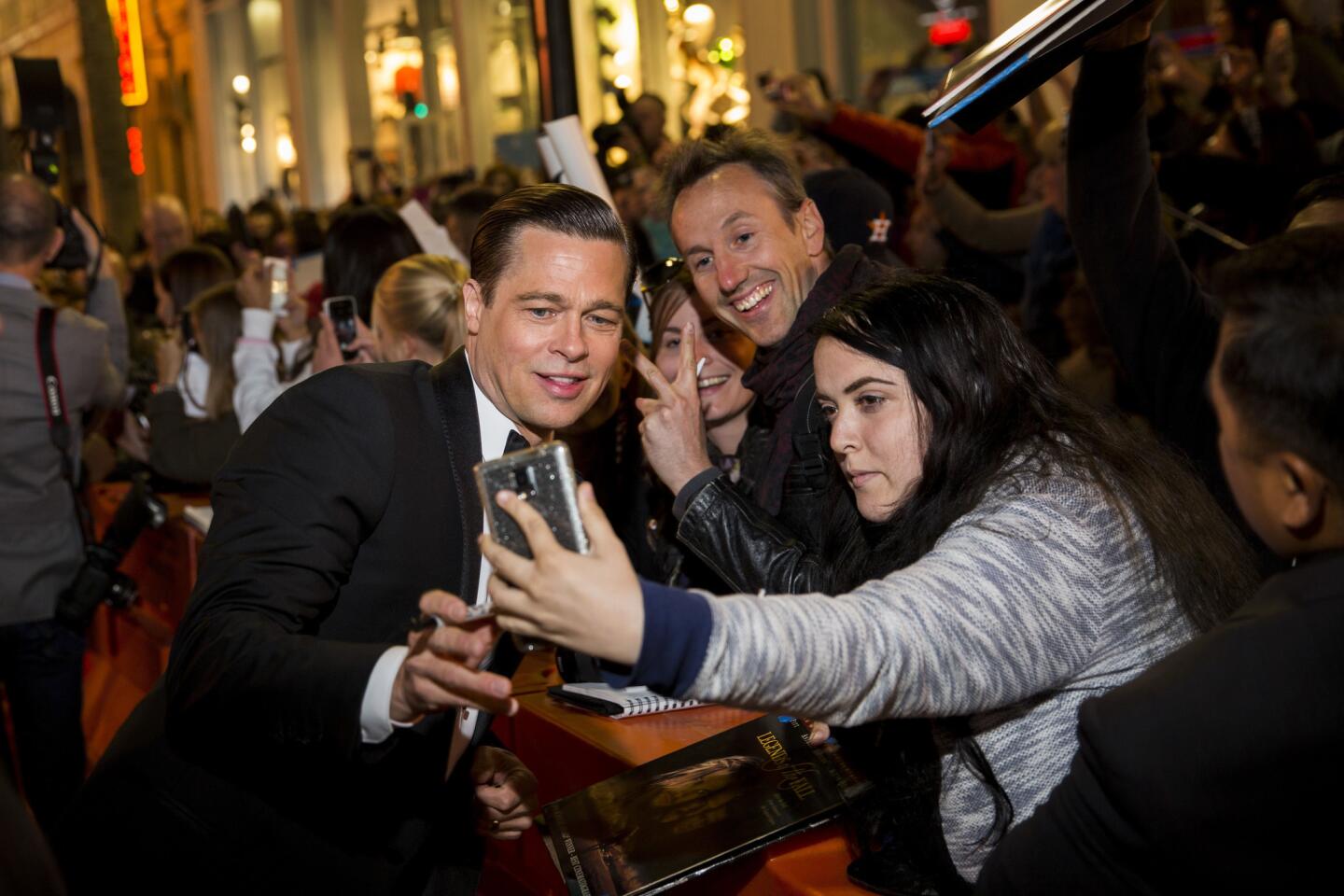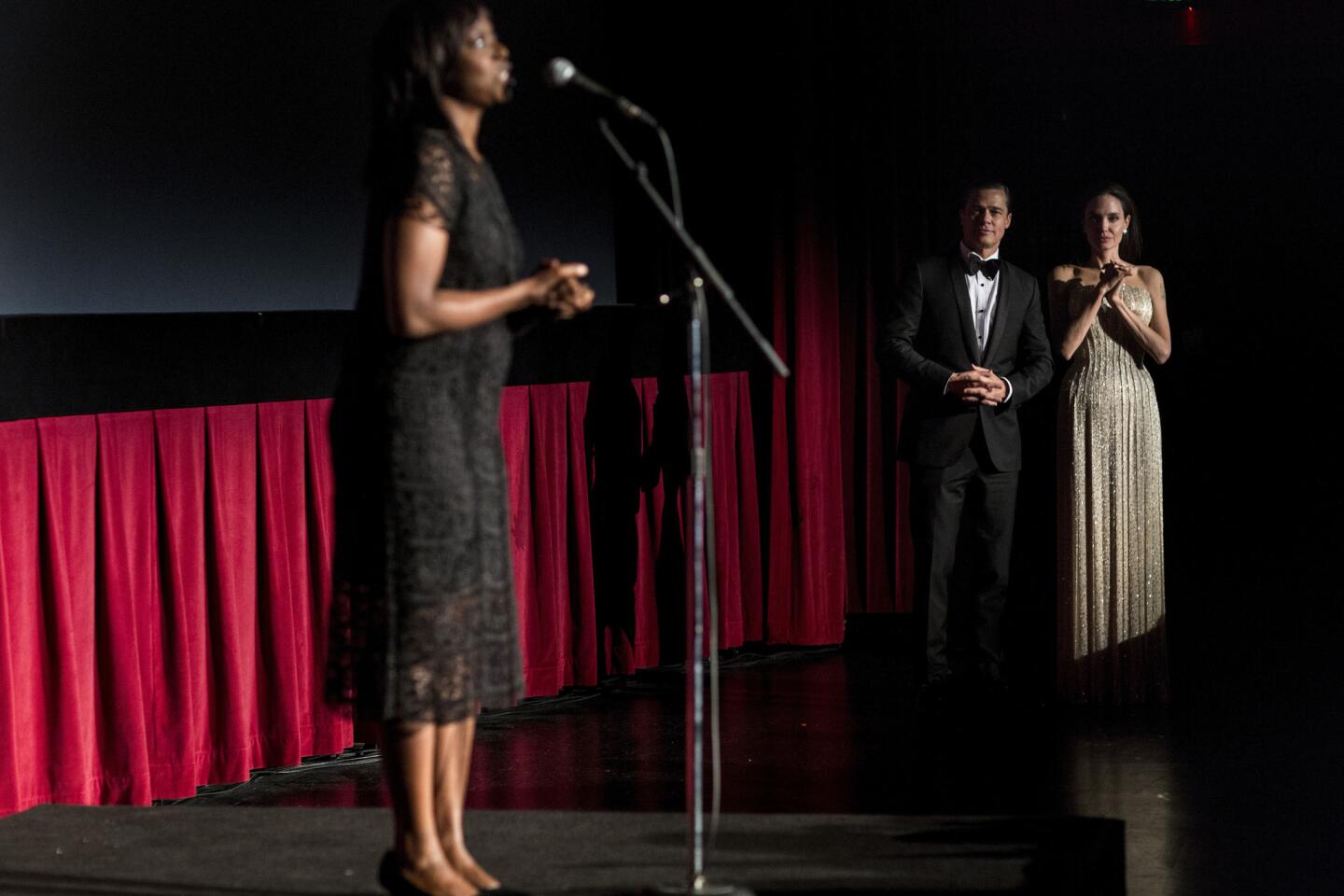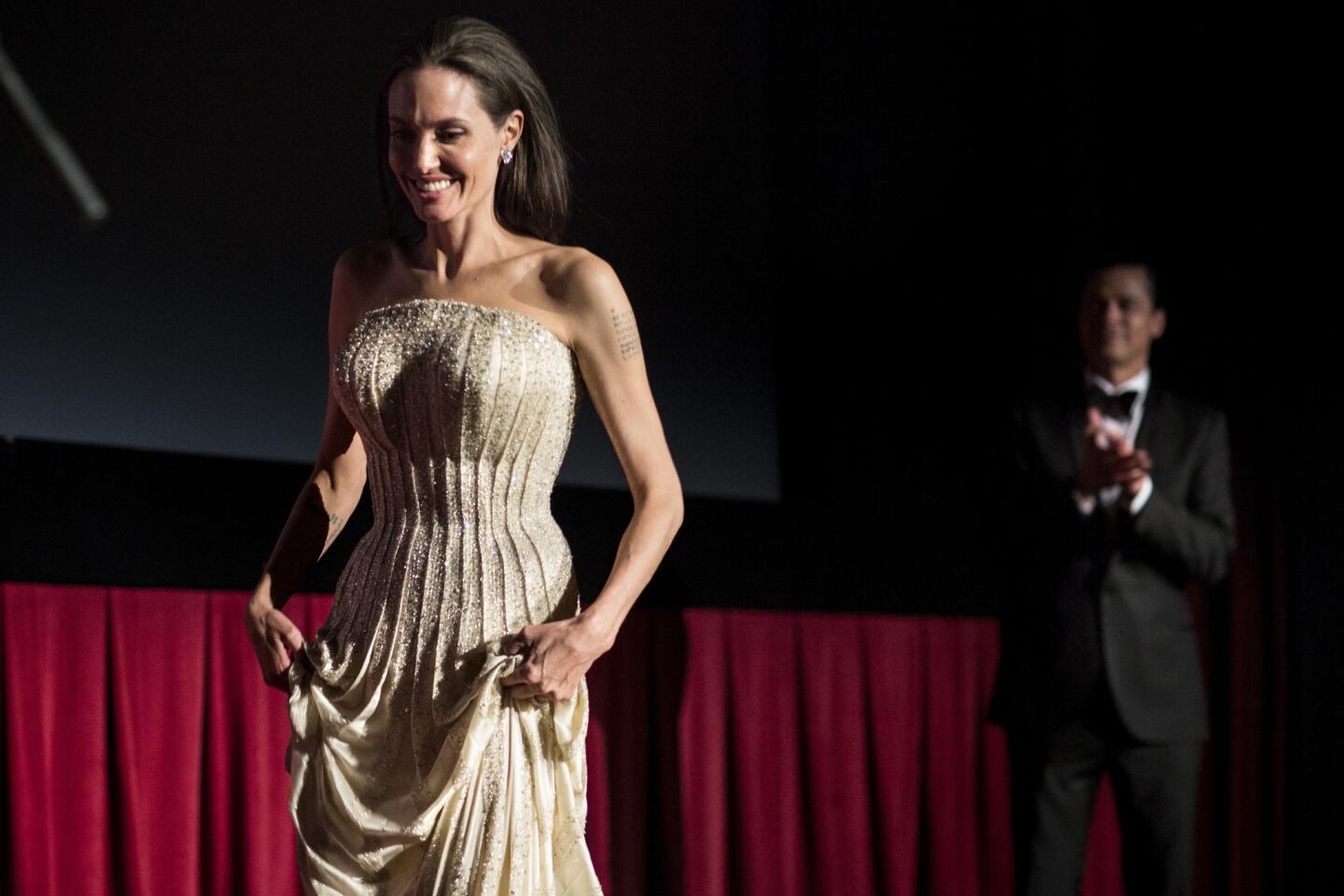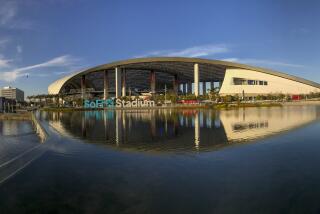The Pathmark grocery store, Rainbow clothing outlet and bodegas at 125th Street and Lexington Avenue in Harlem may seem unlikely settings for a documentary film. But for director Khalik Allah, there’s a beauty in the struggle of the men and women who find themselves here, at poverty’s doorsteps, that deserves to be captured.
“Beauty is obviously in the eye of the beholder,” Allah said. “But to me, these people are rich regardless of the exterior circumstance that depicts them as being poor and drug addicted.”
SIGN UP for the free Indie Focus movies newsletter >>
His new film, “Field ...,” whose title includes a variant spelling of the N-word, showed Friday and Sunday during the American Film Institute’s AFI Fest. In it Allah highlights those who call the New York City intersection and its surrounding streets home. Among them are addicts of a street drug called K2 (synthetic marijuana) and formerly incarcerated alcoholics, people whom audience members might usually ignore or walk past. This film, which continues to make rounds at festivals nationally, forces audiences to spend 60 minutes listening to its subjects riff on police harassment, their personal dreams and fears, and their lives at the bottom of the social hierarchy.
Allah, popular on social media for his photography, spoke with The Times by phone from Copenhagen to discuss his documentary and the men and women of Harlem:
How did you first come to know about 125th Street and Lexington?
I grew up as a Five Percenter, which is headquartered in Harlem. [The Five Percent nation is also known as the Nation of Gods and Earths.] I used to see [that corner] and avoid it. Later on, when I became an artist, I took interest in the intersection because all of the content and substance in the area. They had a tendency to be more open than the Eastside, where I was before.
What about this corner stood out to you as important to highlight? What do you see in these people that others might not?
I focused on this corner because of how sketchy it is and the police and the beauty I saw through my lens. I don’t see them as addicts. I’m identifying with the spirit within the people. I’m not seeing their weaknesses. I only see their strength. And by focusing on their strengths, it’s the purest form of charity.
Why did you choose that title for your documentary ? Are you trying to be provocative?
I was in a rebellious mentality while I was making the film [during the summer of 2014]. But my superheros are Denmark Vesey and Nat Turner, slaves who fought against the master and led rebellions.
The people in my film represent the field slaves of today. Money is being made off of their bodies. Even if they don’t have jobs, they’re being recycled by the prison industrial system. I wanted to play off of that concept from slavery.
[In the film, Allah also states the title is also pulled from a Malcolm X speech, titled “Message to the Grassroots,” in which the activist describes two different types of slaves, those who worked in the house and those who worked in the field.]
1/78
Actor Christian Bale takes pictures and signs autographs with fans lining Hollywood Boulevard before walking the red carpet for the premiere of “The Big Short” on the closing night of AFI.
(Jay L. Clendenin / Los Angeles Times) 2/78
Actors Lily Rabe, left, and Hamish Linklater giggle on the red carpet for the premiere of “The Big Short.”
(Jay L. Clendenin / Los Angeles Times) 3/78
Ryan Gosling, Christian Bale and other cast members leave the theater after director Adam McKay introduced the premiere of “The Big Short” on closing night of the AFI festival.
(Jay L. Clendenin / Los Angeles Times) 4/78
Actor Steve Carell joins Melissa Leo on the red carpet for the premiere of “The Big Short” on closing night of the AFI Fest.
(Jay L. Clendenin / Los Angeles Times) 5/78
Actress Karen Gillan does her thing on the red carpet for the premiere of “The Big Short” on the closing night of the festival.
(Jay L. Clendenin / Los Angeles Times) 6/78
Actor Ryan Gosling is captured on the red carpet for the premiere of “The Big Short” on the closing night of the festival.
(Jay L. Clendenin / Los Angeles Times) 7/78
From left, actors Ryan Gosling, Marisa Tomei and Steve Carell get chatty on the red carpet for the premiere of “The Big Short” on the closing night of the AFI festival.
(Jay L. Clendenin / Los Angeles Times) 8/78
Actor Finn Wittrock is captured on the red carpet for the premiere of “The Big Short” on the closing night of the festival.
(Jay L. Clendenin / Los Angeles Times) 9/78
Will Smith poses with fans near the TCL Chinese Theatre in Hollywood, where he’d arrived Tuesday for the AFI Fest premiere of his film “Concussion.”
(Jay L. Clendenin / Los Angeles Times) 10/78
Will Smith, with producer Giannina Facio and her partner, writer/producer/director Ridley Scott, have a laugh before the premiere of “Concussion” at AFI FEST 2015.
(Jay L. Clendenin / Los Angeles Times) 11/78
Actor Will Smith poses for photos and signs autographs for fans lined up along Hollywood Boulevard on Tuesday.
(Jay L. Clendenin / Los Angeles Times) 12/78
Dr. Julian Bailes, former team physician for the Pittsburgh Steelers, greets former NFL lineman Leonard Marshall, right, before the premiere of “Concussion.”
(Jay L. Clendenin / Los Angeles Times) 13/78
Actor Will Smith, right, with director Peter Landesman on the red carpet.
(Jay L. Clendenin / Los Angeles Times) 14/78
Musician Leon Bridges, left, and actor Will Smith before the premiere of “Concussion.”
(Jay L. Clendenin / Los Angeles Times) 15/78
Actress Sara Lindsey on the red carpet for the premiere of “Concussion” at AFI Fest on Tuesday.
(Jay L. Clendenin / Los Angeles Times) 16/78
Actress Gugu Mbatha-Raw in Hollywood for the premiere of “Concussion.”
(Jay L. Clendenin / Los Angeles Times) 17/78
Actors Mike O’Malley, left, and Will Smith on the red carpet for their film “Concussion.”
(Jay L. Clendenin / Los Angeles Times) 18/78
Actors Mike O’Malley, from left, David Morse, Sara Lindsey, Will Smith, Gugu Mbatha-Raw, Adewale Akinnuoye-Agbaje and Albert Brooks pose before the premiere of their film “Concussion.”
(Jay L. Clendenin / Los Angeles Times) 19/78
Sports broadcaster Bob Costas, second from left, greets actor Will Smith, right, on the red carpet.
(Jay L. Clendenin / Los Angeles Times) 20/78
Actresses Gugu Mbatha-Raw, left and Sara Lindsey attend the Sony after-party following the premiere of “Concussion” at AFI Fest 2015.
(Jay L. Clendenin / Los Angeles Times) 21/78
Actor Will Smith and Dr. Bennet Omalu, whom Smith portrays in “Concussion,” attend the Sony after-party at the Hollywood Roosevelt hotel.
(Jay L. Clendenin / Los Angeles Times) 22/78
Producer and director Ridley Scott borrows a camera to take a group photo at the “Concussion” after-party.
(Jay L. Clendenin / Los Angeles Times) 23/78
Actor Ewan McGregor speaks to reporters before the film “Last Days in the Desert” at AFI Fest 2015 on Wednesday.
(Jay L. Clendenin / Los Angeles Times) 24/78
Actor Ewan McGregor, left, and director Rodrigo Garcia pose for photos before showing their film “Last Days in the Desert” on Wednesday at AFI Fest.
(Jay L. Clendenin / Los Angeles Times) 25/78
The cast and four of the Chilean miners whose stories are told in the “The 33” pose on the red carpet before the film’s premiere at AFI Fest.
(Jay L. Clendenin / Los Angeles Times) 26/78
Mario Gomez, from left, Luis Urzua, Edison”’Elvis” Peña and Juan Carlos Aguilar at the Hollywood premiere of “The 33,” the film that tells their story of being trapped in a Chilean mine.
(Jay L. Clendenin / Los Angeles Times) 27/78
Actress Juliette Binoche before the premiere of “The 33” at the TCL Chinese Theatre in Hollywood.
(Jay L. Clendenin / Los Angeles Times) 28/78
Actor Jacob Vargas, right, poses with Edison “Elvis” Peña, the Chilean miner he portrayed in “The 33.”
(Jay L. Clendenin / Los Angeles Times) 29/78
A model of the rescue capsule used to save the Chilean miners is displayed at the premiere of “The 33.”
(Jay L. Clendenin / Los Angeles Times) 30/78
Actor Antonio Banderas, who stars in “The 33,” and Nicole Kimpel on the red carpet at AFI Fest in Hollywood.
(Jay L. Clendenin / Los Angeles Times) 31/78
Juliette Binoche and Antonio Banderas before the premiere of “The 33.”
(Jay L. Clendenin / Los Angeles Times) 32/78
“The 33” actresses Kate Del Castillo, from left, Cote de Pablo and Juliette Binoche on the red carpet.
(Jay L. Clendenin / Los Angeles Times) 33/78
Author and former Los Angeles Times reporter Hector Tobar on the red carpet for “The 33.” The film was adapted from Tobar’s book “Deep Down Dark: The Untold Stories of 33 Men Buried in a Chilean Mine, and the Miracle That Set Them Free.”
(Jay L. Clendenin / Los Angeles Times) 34/78
Oscar De La Hoya poses for photos before the premiere of “The 33” at AFI Fest.
(Jay L. Clendenin / Los Angeles Times) 35/78
Sylvester Stallone and his wife, Jennifer Flavin, at “The 33” oremiere.
(Jay L. Clendenin / Los Angeles Times) 36/78
Sylvester Stallone, right, gets a hug from Chilean miner Luis Urzua as actor Lou Diamond Phillips watches.
(Jay L. Clendenin / Los Angeles Times) 37/78
Actress Cote de Pablo, center, poses with Chilean miners Luis Urzua, from left, Juan Carlos Aguilar, Mario Gomez and Edison “Elvis” Peña and producer Mike Medavoy before the premiere of “The 33.”
(Jay L. Clendenin / Los Angeles Times) 38/78
The cast of the film “Mustang” and director Deniz Gamze Ergüven, far right, arrive to be photographed at AFI Fest.
(Jay L. Clendenin / Los Angeles Times) 39/78
Sony Pictures Classics’s copresidents and cofounders, Michael Barker, left and Tom Bernard, pose with Hungarian director László Nemes, center, before the showing of his film “Son of Saul” on Monday.
(Jay L. Clendenin / Los Angeles Times) 40/78
Hungarian director László Nemes, left, and his lead actor Geza Ršhrig before the showing of their film, “Son of Saul,” at the Egyptian Theatre in Hollywood.
(Jay L. Clendenin / Los Angeles Times) 41/78
Director Michael Moore arrives Nov. 7 for the showing of his new film, “Where to Invade Next,” at AFI Fest 2015 at Grauman’s Egyptian Theatre in Hollywood.
(Jay L. Clendenin / Los Angeles Times) 42/78
Director Michael Moore walks the red carpet before showing his new film, “Where to Invade Next,” on Nov. 7 at Grauman’s Egyptian Theatre in Hollywood.
(Jay L. Clendenin / Los Angeles Times) 43/78
Actress Sally Kirkland poses on the red carpet before the showing of director Michael Moore’s “Where to Invade Next” on Nov. 7.
(Jay L. Clendenin / Los Angeles Times) 44/78
Actor Richard Chamberlain poses for photographers on the red carpet before a showing of Michael Moore’s “Where to Invade Next” on Nov. 7.
(Jay L. Clendenin / Los Angeles Times) 45/78
Actor Sam Waterston walks the red carpet before the showing of director Michael Moore’s “Where to Invade Next” on Nov. 7 in Hollywood.
(Jay L. Clendenin / Los Angeles Times) 46/78
Director Michael Moore introduces “Where to Invade Next” at AFI Fest 2015.
(Jay L. Clendenin / Los Angeles Times) 47/78
Producer Carl Dean, left, director Michael Moore and producer Tia Lessin introduce their new film, “Where to Invade Next,” at AFI Fest 2015 in Hollywood on Nov. 7.
(Jay L. Clendenin / Los Angeles Times) 48/78
Movie fans line up along North McCadden Place in Hollywood for a showing of Michael Moore’s “Where to Invade Next” at AFI Fest 2015.
(Jay L. Clendenin / Los Angeles Times) 49/78
Gr’mur Hakonarson, director of the Icelandic film “Rams,” is photographed before heading into the theatre to introduce his film at the TCL Chinese 6 Theatres on the second night of AFI Fest 2015. There are 127 films from 45 countries showing in this year’s festival.
(Jay L. Clendenin / Los Angeles Times) 50/78
Grimur Hakonarson, director of the Icelandic film “Rams,” does a brief interview with AFI Fest staff before introducing his film at the TCL Chinese 6 Theatres on the second night of the AFI Fest 2015 in Hollywood.
(Jay L. Clendenin / Los Angeles Times) 51/78
Rafaella Biscayn, left, Sarah Bigle and Andrew Godoski have fun in a photobooth at an AFI alumni party at the Hollywood Roosevelt Hotel on the second night of the AFI Fest 2015.
(Jay L. Clendenin / Los Angeles Times) 52/78
Director Nicholas Hytner, left, and actor Alex Jennings arrive to introduce “The Lady in the Van.”
(Jay L. Clendenin / Los Angeles Times) 53/78
Movie fans wait -- some seemingly a little longer than others -- for director Nicholas Hytner and actor Alex Jennings to arrive and introduce their film, “The Lady in the Van.”
(Jay L. Clendenin / Los Angeles Times) 54/78
Director Nicholas Hytner, left, and actor Alex Jennings introduce “The Lady in the Van.”
(Jay L. Clendenin / Los Angeles Times) 55/78
The room was full for an AFI alumni party at the Hollywood Roosevelt Hotel on the second night of AFI Fest 2015 in Hollywood.
(Jay L. Clendenin / Los Angeles Times) 56/78
Attendees of the AFI alumni reception at the Hollywood Roosevelt Hotel mix and mingle.
(Jay L. Clendenin / Los Angeles Times) 57/78
A couple of attendees of the filmmaker AFI alumni reception share a moment away from the crowd.
(Jay L. Clendenin / Los Angeles Times) 58/78
A person checks her phone outside the penthouse suite of the Hollywood Roosevelt Hotel during a filmmaker welcome party that also previewed virtual-reality technologies.
(Jay L. Clendenin / Los Angeles Times) 59/78
The scene outside the penthouse suite of the Hollywood Roosevelt Hotel during a filmmaker welcome party.
(Jay L. Clendenin / Los Angeles Times) 60/78
Volunteer Cecilia Martin watches virtual-reality content, including content created by Google, during a filmmaker welcome party in the penthouse suite of the Hollywood Roosevelt Hotel.
(Jay L. Clendenin / Los Angeles Times) 61/78
People watch virtual-reality content during a filmmaker welcome party.
(Jay L. Clendenin / Los Angeles Times) 62/78
People watch virtual-reality content produced by Vrse.Works.
(Jay L. Clendenin / Los Angeles Times) 63/78
HOLLYWOOD, CA--NOVEMBER 05, 2015--Actress, writer, producer and director Angelina Jolie Pitt and her husband, actor Brad Pitt, pose on the red carpet for the opening night premiere of their new film, “By The Sea,” at AFI FEST 2015, presented by Audi, at TCL Chinese 6 Theatres, in Hollywood, CA, November 05, 2015. (Jay L. Clendenin / Los Angeles Times)
(Jay L. Clendenin / Los Angeles Times) 64/78
Actors Melvil Poupaud and Melanie Laurent, left, pose alongside actress-writer-producer and director Angelina Jolie Pitt and her husband, actor Brad Pitt, on the red carpet for the premiere of “By the Sea” in Hollywood.
(Jay L. Clendenin / Los Angeles Times) 65/78
Angelina Jolie Pitt and Brad Pitt walk the red carpet.
(Jay L. Clendenin / Los Angeles Times) 66/78
Angelina Jolie Pitt answers questions.
(Jay L. Clendenin / Los Angeles Times) 67/78
Festival director Jacqueline Lyanga poses on the red carpet before the premiere of “By the Sea.”
(Jay L. Clendenin / Los Angeles Times) 68/78
Angelina Jolie Pitt and Brad Pitt draw a crowd, as usual.
(Jay L. Clendenin / Los Angeles Times) 69/78
Actress Melanie Laurent of “By the Sea.”
(Jay L. Clendenin / Los Angeles Times) 70/78
Melanie Laurent, left, and Angelina Jolie Pitt talk backstage at the premiere of “By the Sea.”
(Jay L. Clendenin / Los Angeles Times) 71/78
An iPhone shows director Angelina Jolie Pitt speaking on the red carpet.
(Jay L. Clendenin / Los Angeles Times) 72/78
Brad Pitt greets Donna Langley, chairman of Universal Pictures, on the red carpet for the premiere of “By the Sea.”
(Jay L. Clendenin / Los Angeles Times) 73/78
Brad Pitt greets fans at the AFI Fest.
(Jay L. Clendenin / Los Angeles Times) 74/78
Fans hope to get autographs from Angelina Jolie Pitt and Brad Pitt.
(Jay L. Clendenin / Los Angeles Times) 75/78
Angelina Jolie Pitt greets fans.
(Jay L. Clendenin / Los Angeles Times) 76/78
Jacqueline Lyanga, AFI Fest director, introduces Angelina Jolie Pitt, right.
(Jay L. Clendenin / Los Angeles Times) 77/78
Angelina Jolie Pitt waits alongside Brad Pitt, before introducing her film, “By the Sea,” at AFI Fest.
(Jay L. Clendenin / Los Angeles Times) 78/78
Angelina Jolie Pitt walks up to introduce “By the Sea.”
(Jay L. Clendenin / Los Angeles Times) The subjects of the film speak on police, poverty and parenting. Did you expect all of that to come out when you began?
Kind of. The idea going in was to show 360 degrees of the environment and mind-state I’m in when I’m out there, and the mind-state of that corner. To do so, I just tried to flash the camera on everything. I was more or less trying to capture an energy. Not much writing was done, it was kind of freestyle. Then when I went to edit, I had all of this [great stuff]. When you cast the net out you may catch an octopus that you weren’t expecting.
This was captured during summer 2014, around the time of Eric Garner’s death. You inserted footage of it, but you say the film is not political but rather spiritual. What do you mean by that?
I can guarantee there are people who critique and say it’s political. But those [political] things are ancillary and secondary to my intent. My intent was to show something genuine. Even with the title, you’re walking a fine line of exploitation, but it was more spiritual than political because I’m only trying to focus on the light in another person. Most don’t think these people have any light left. They are dead to them. I feel like I can resurrect them through the camera.
I call what I do “camera ministry.” I’m resurrecting and baptizing people with light. It’s not religious or political or anything. Any political implication it has -- well, what’s not political? What’s not going to be political when you’re talking about why people are living the way they do?
The film is a collection of video portraits in succession, with non-sync audio of your subjects. Why did you choose this method, as opposed to something synced?
The movie was built in a way where it separated audio and video so that you had to use your imagination. You had to draw on that. I’m not telling you what to think. I’m giving the viewer freedom to think what they want. This is truly a photographer’s documentary.
What do you want audiences to take away from the film?
I hope they get the sense of empathy and a deeper sense of love and compassion for people like this who they would usually avoid. I want them to view people as being rich anyway; they’re rich in spirit. They’re rich in beauty, in strength, in resilience, to be so oppressed for 400-plus years and still have this energy.
Once you get over the title, if that is an issue for you, it could really be named anything and it would be valuable.
Get your life! Follow me on Twitter: @TrevellAnderson.
MORE:
At AFI Fest, animation pioneer offers a vision for a VR future
Johnny Depp and Scott Cooper discuss ‘Black Mass’ at AFI Fest
Why the AFI Fest could be an important piece of the Oscar puzzle
